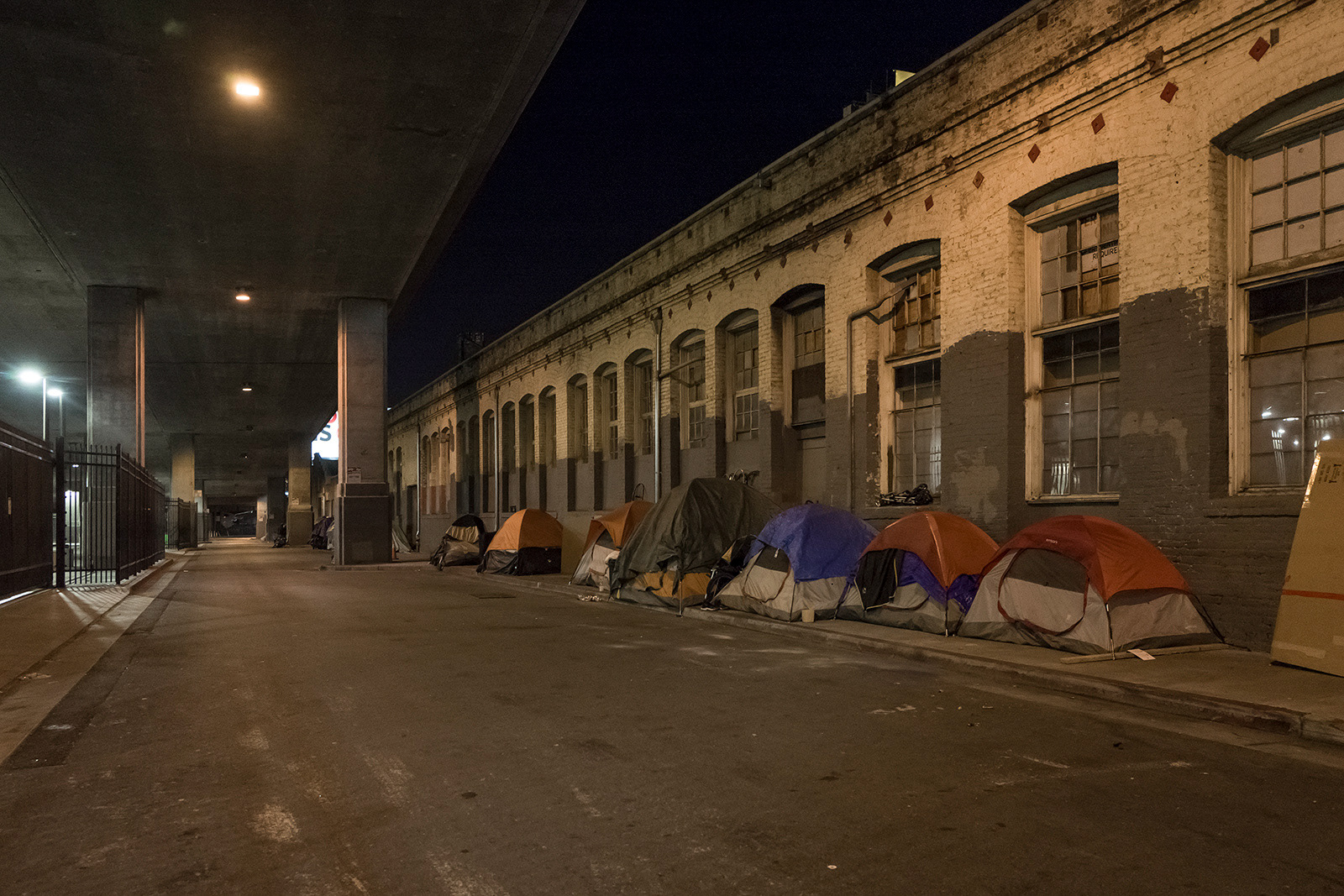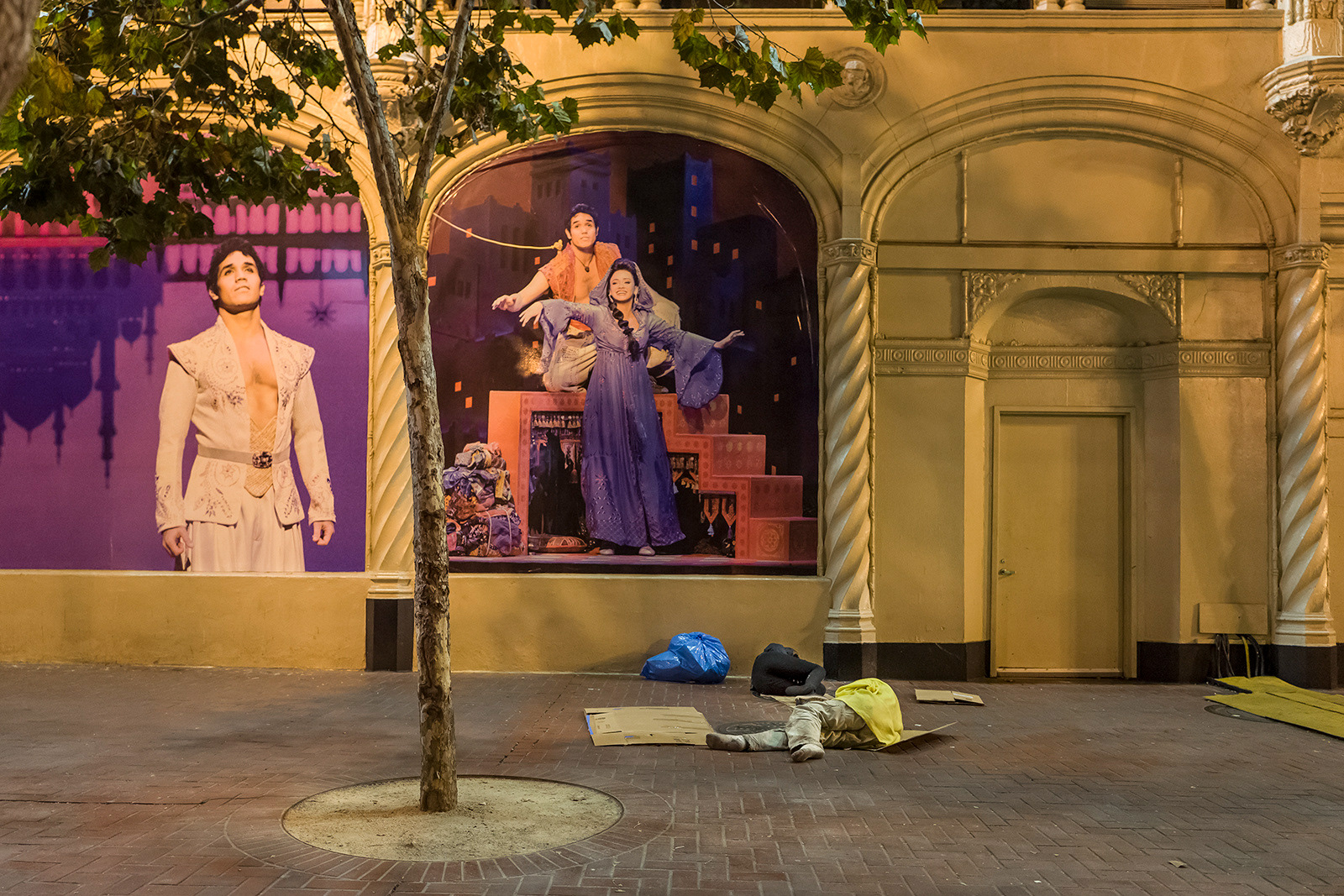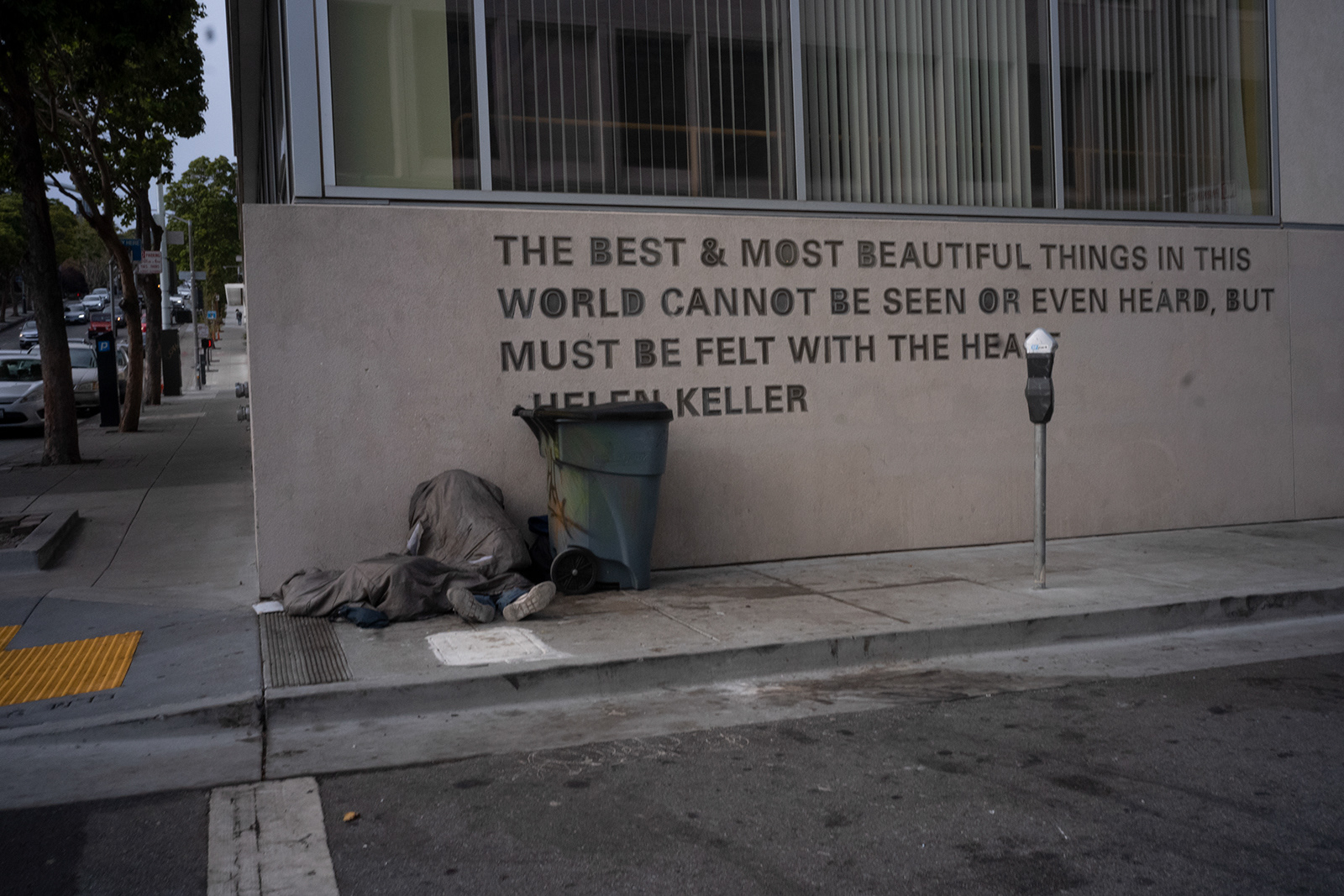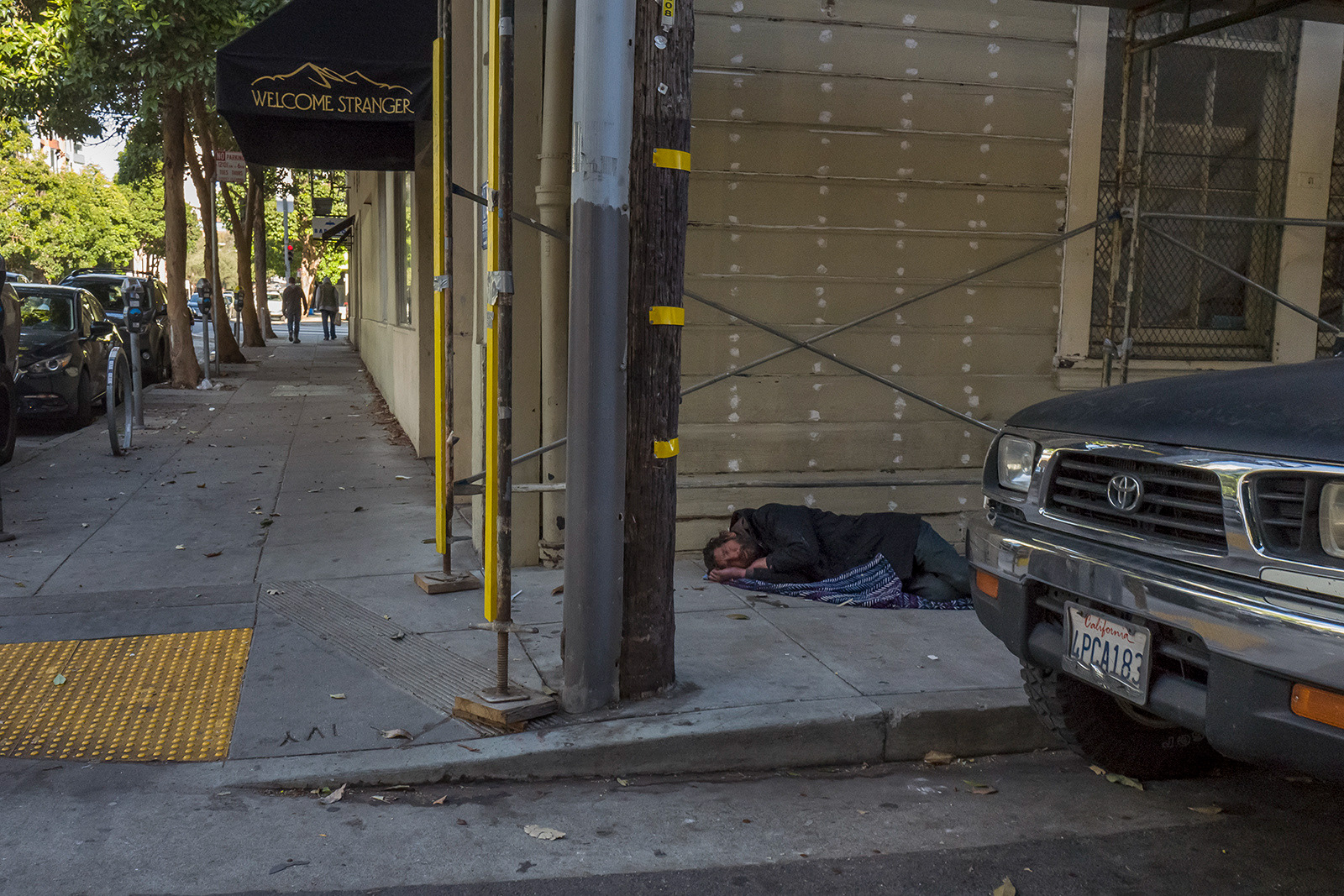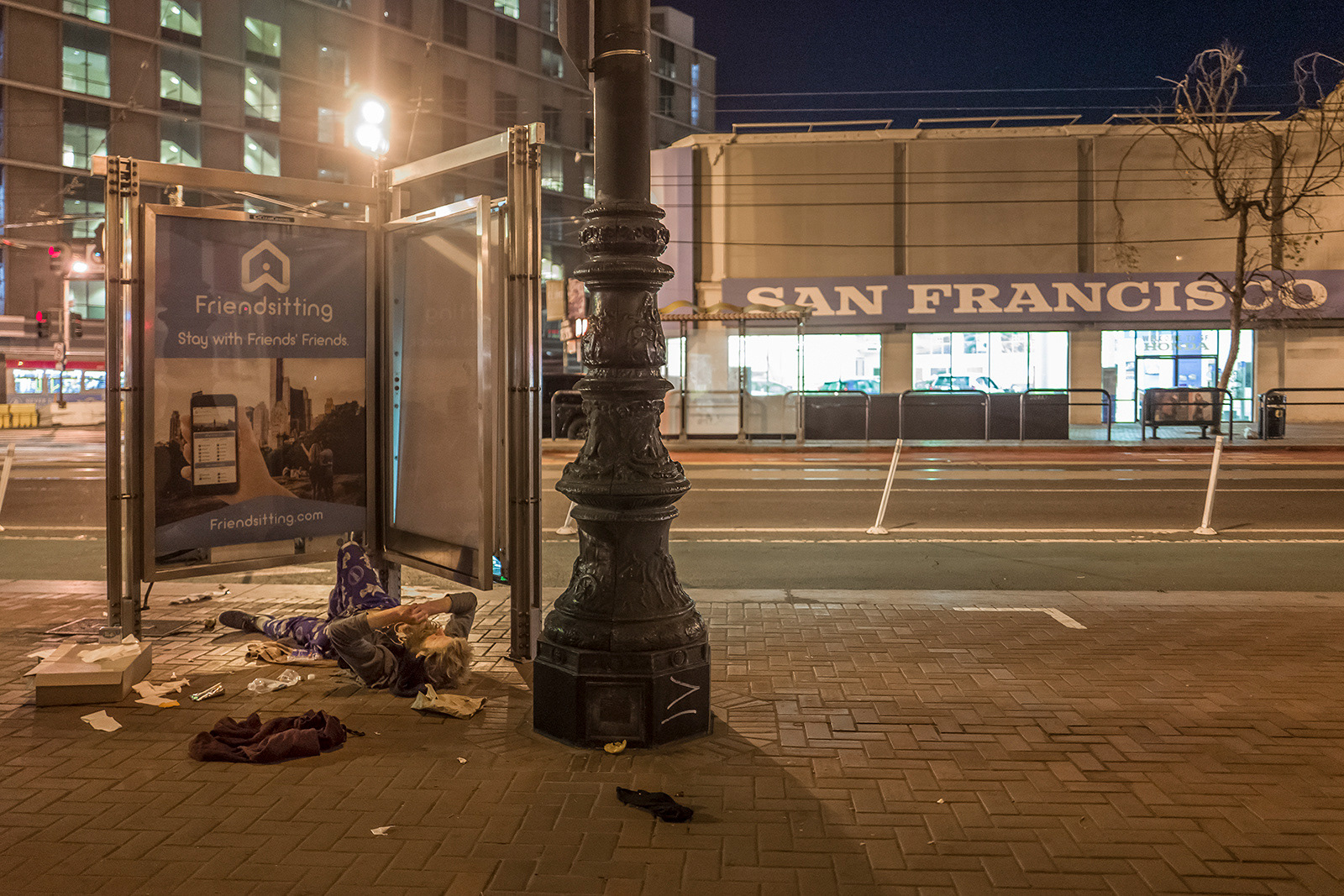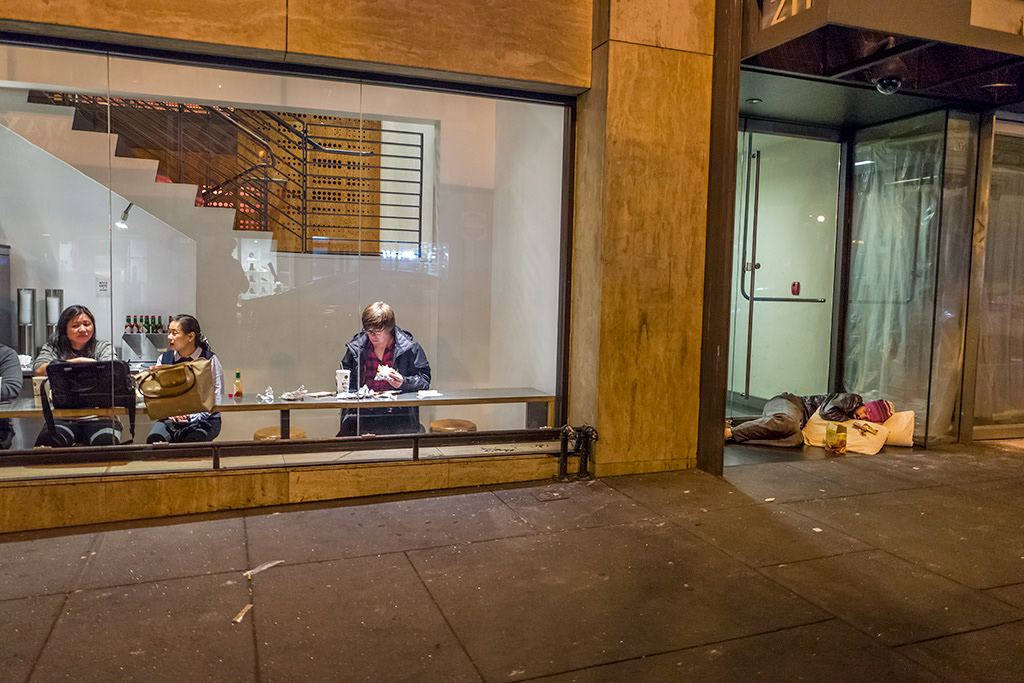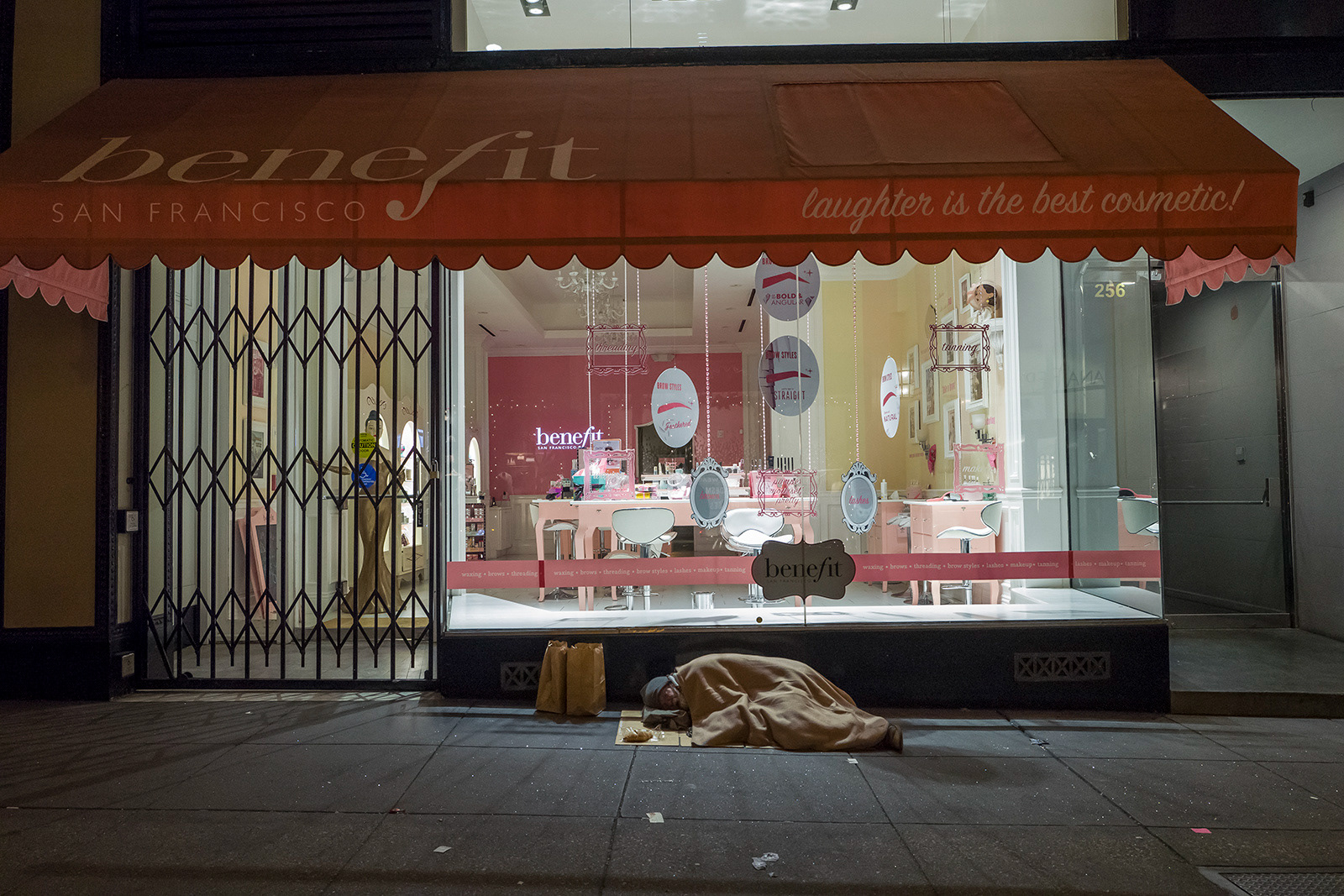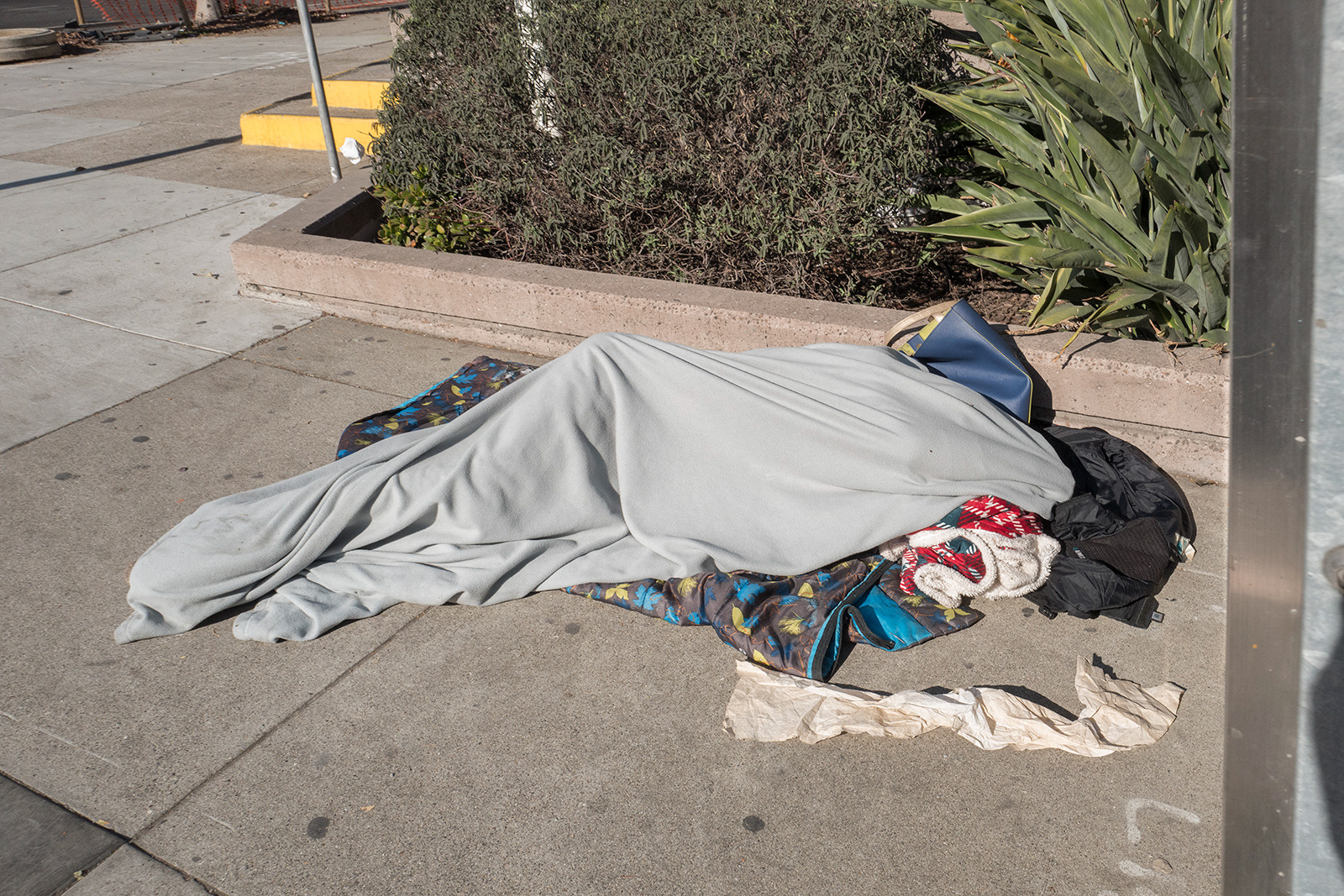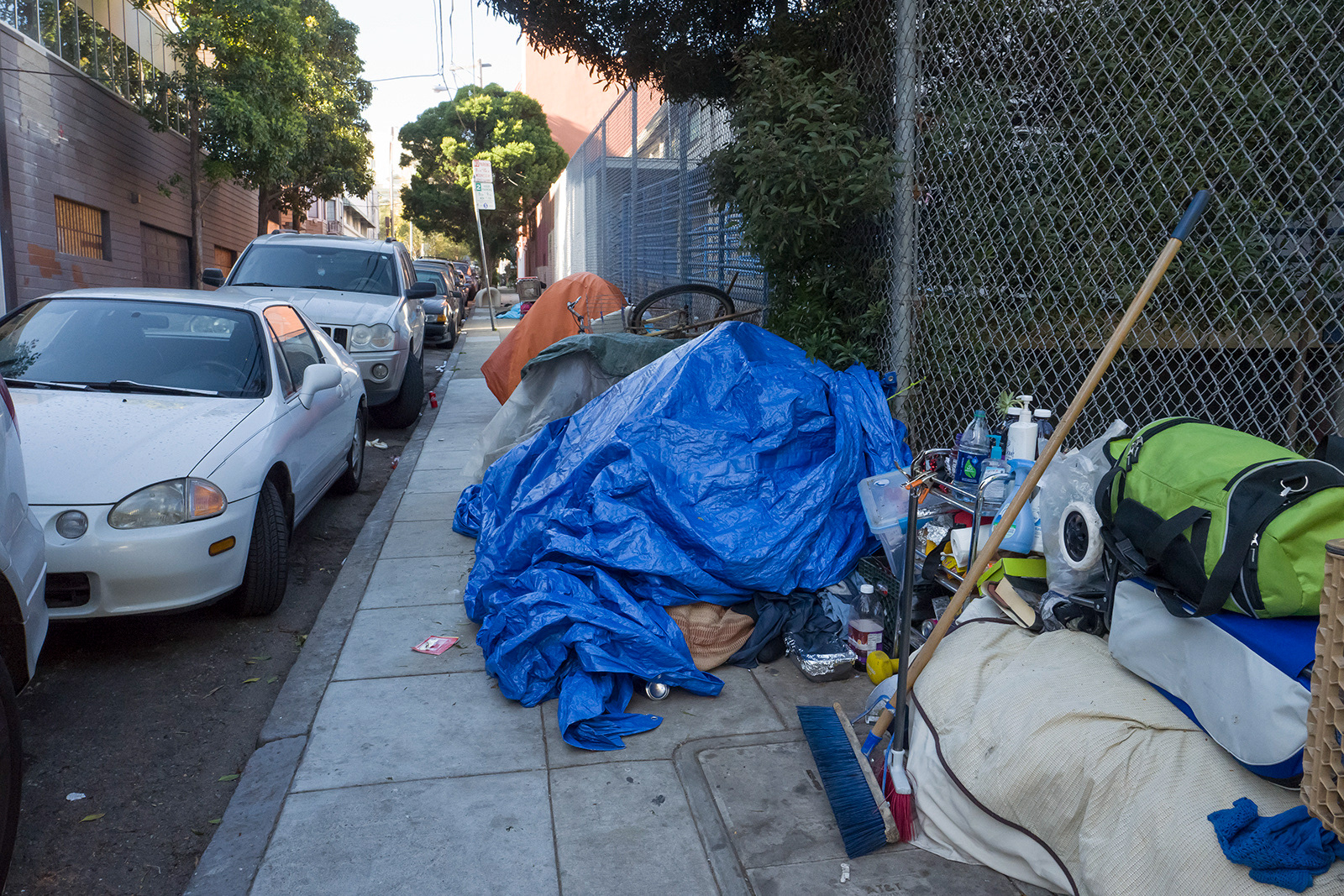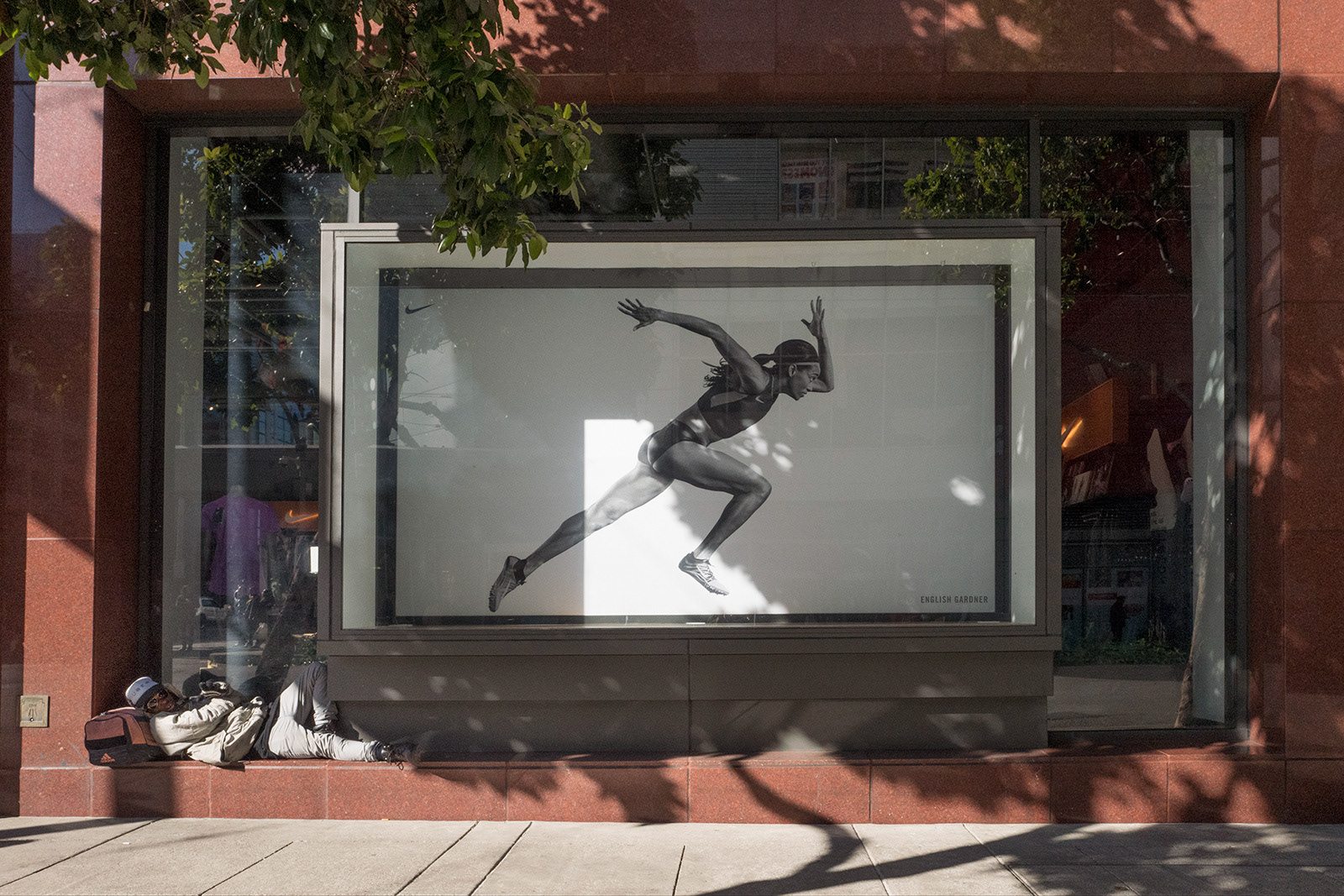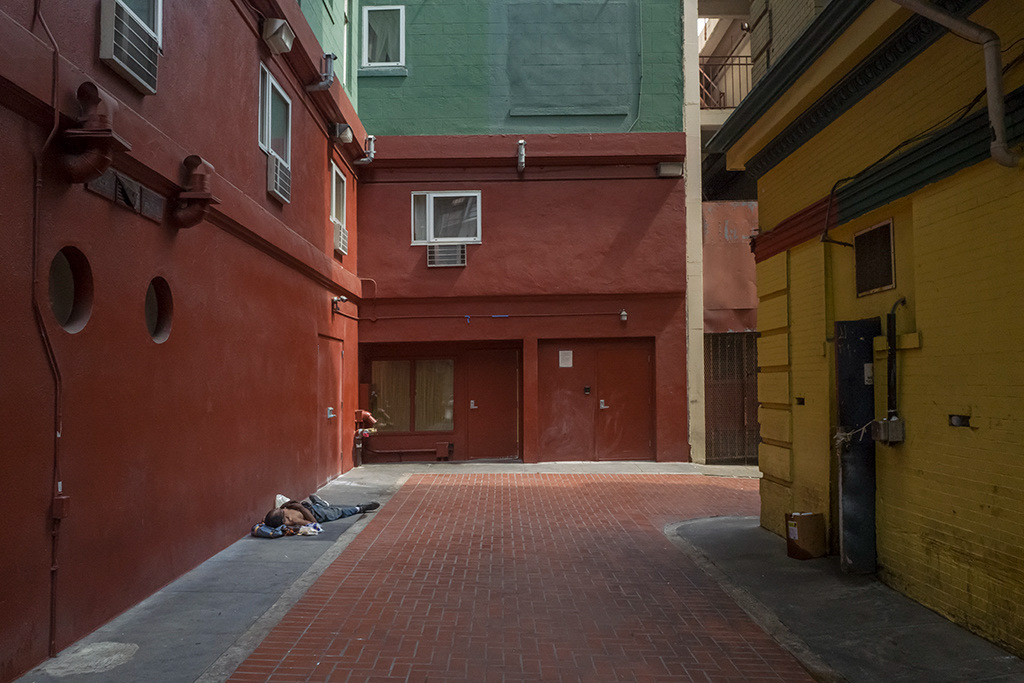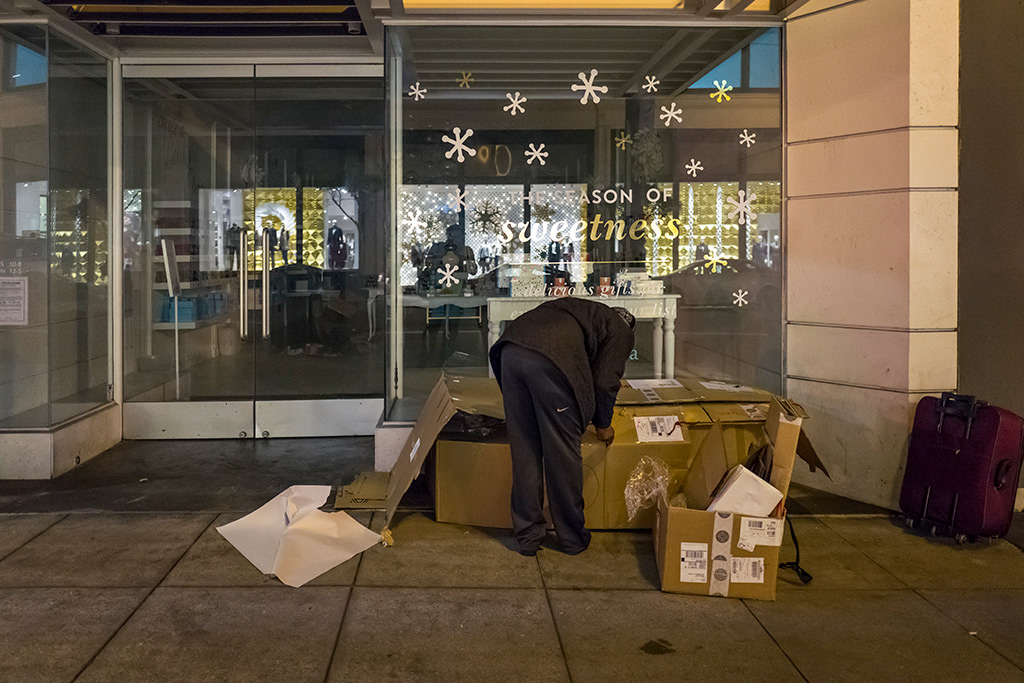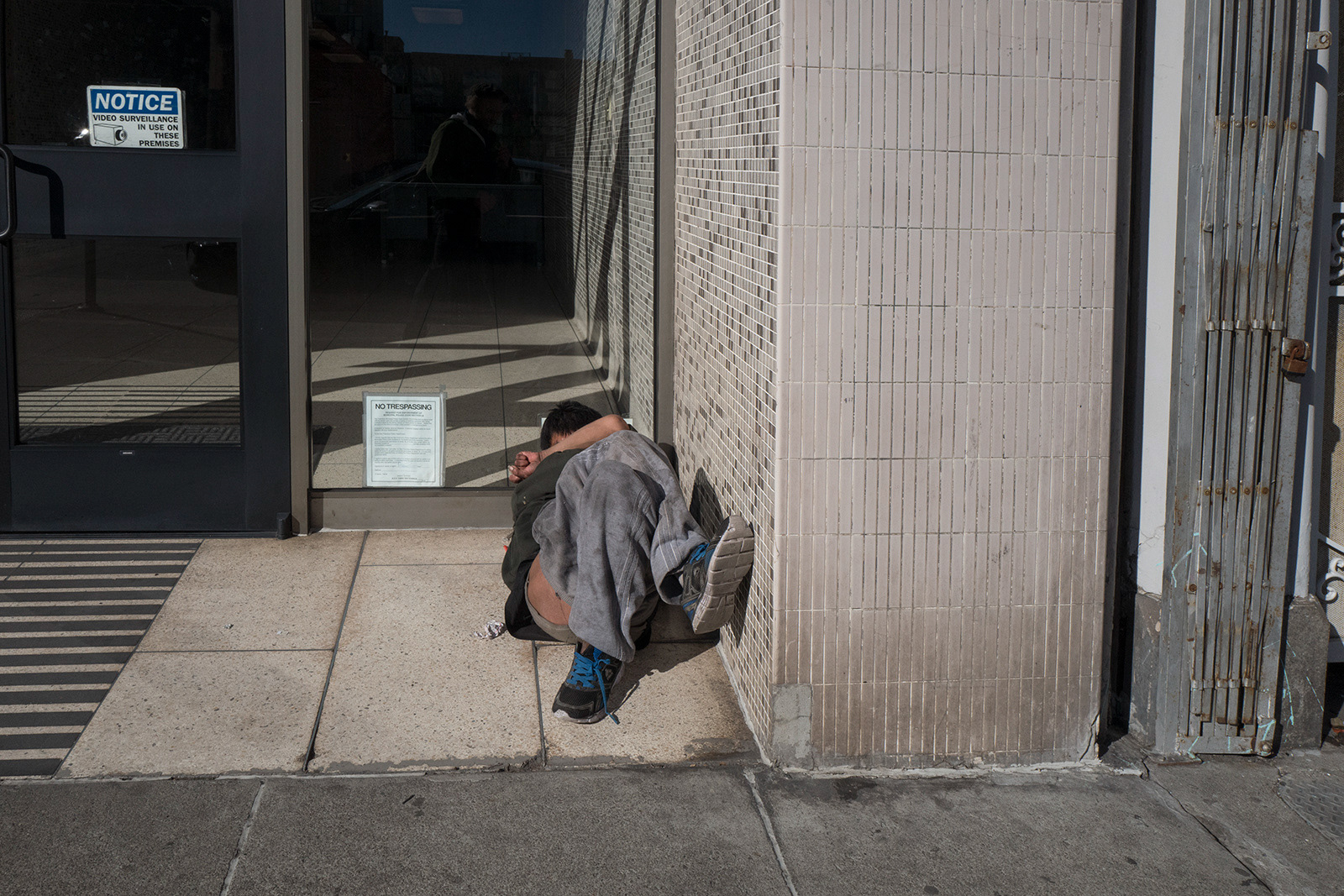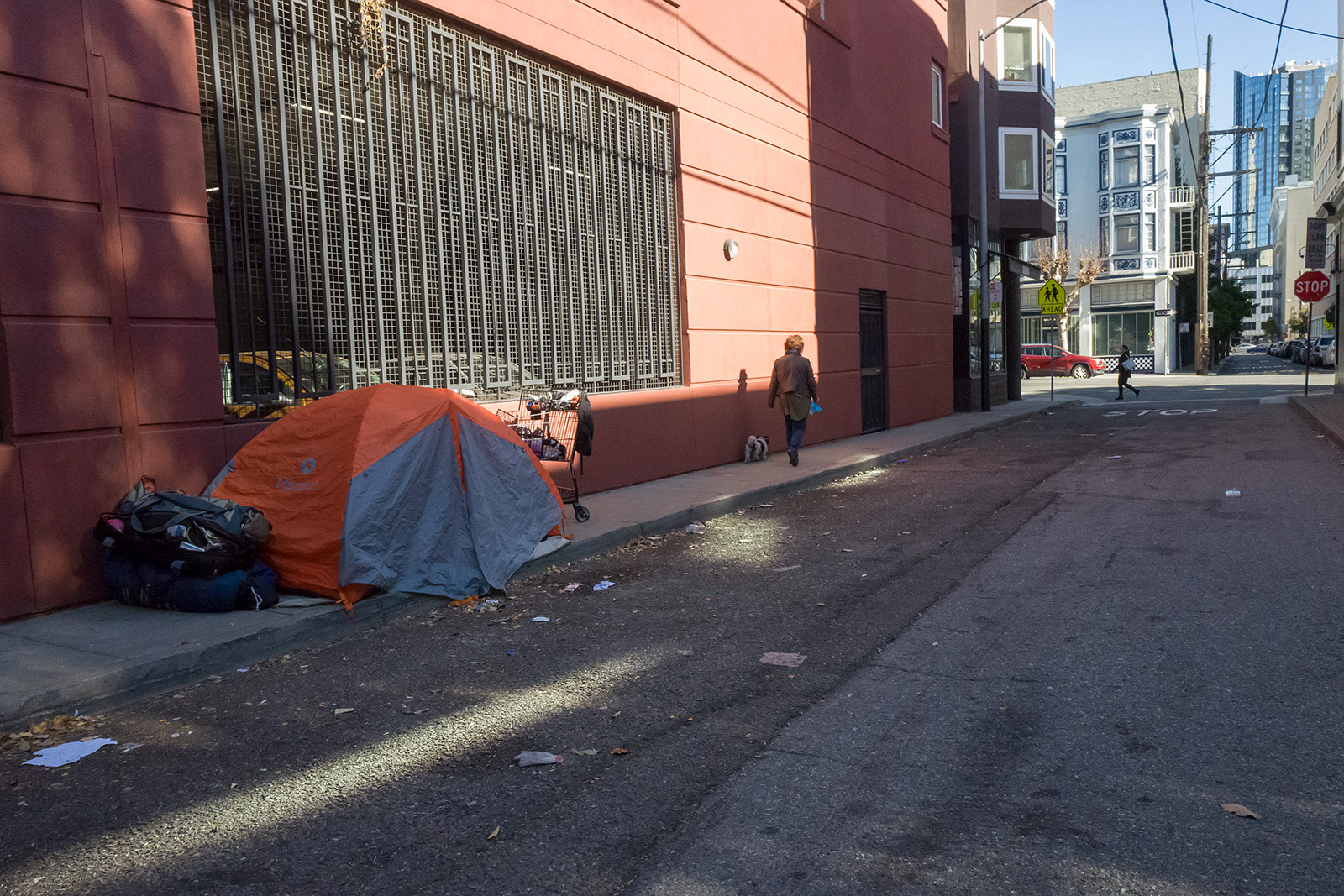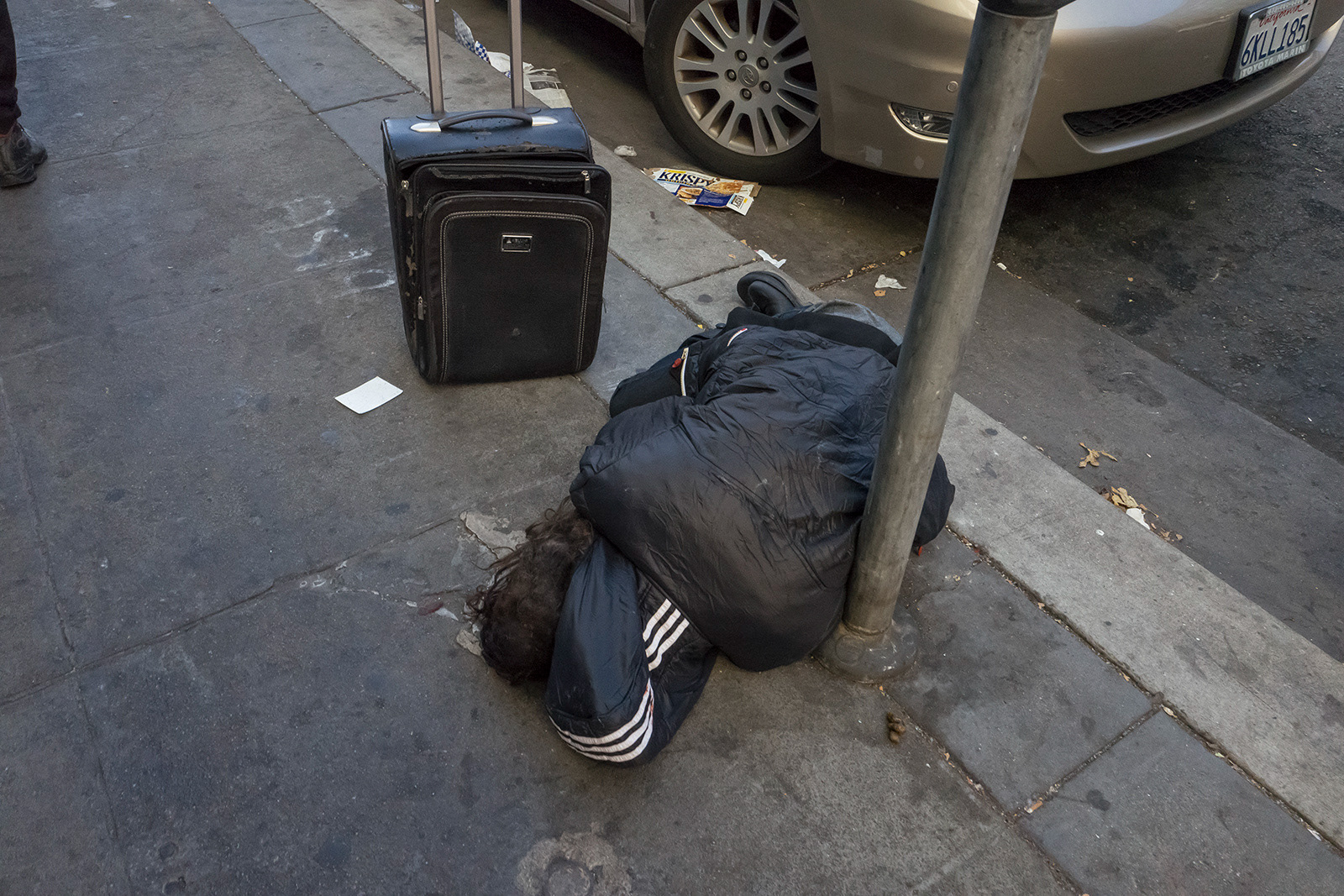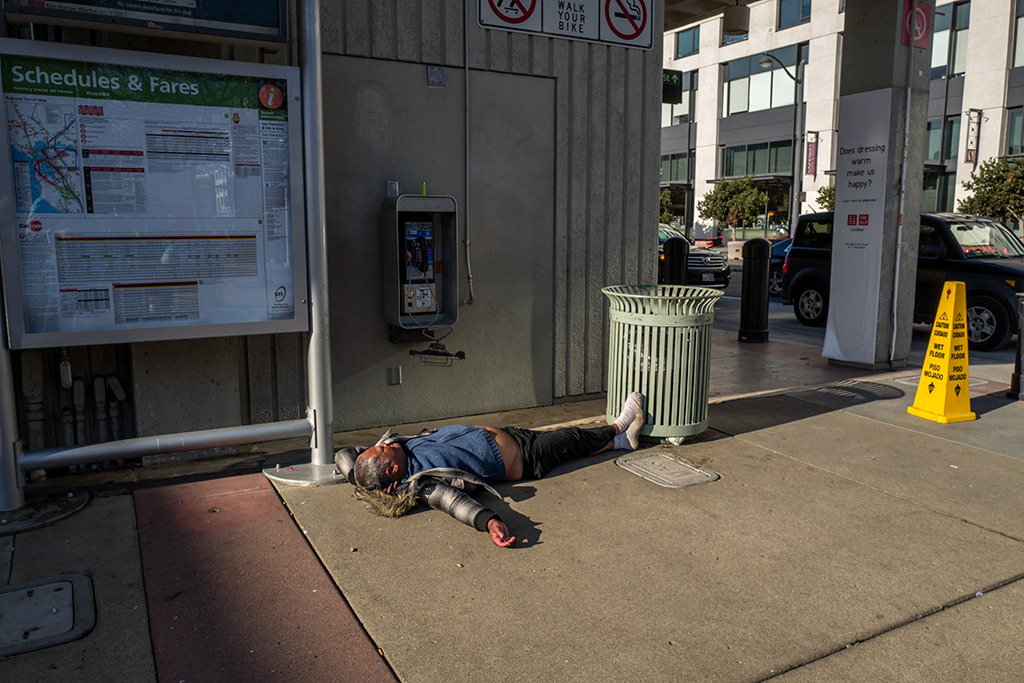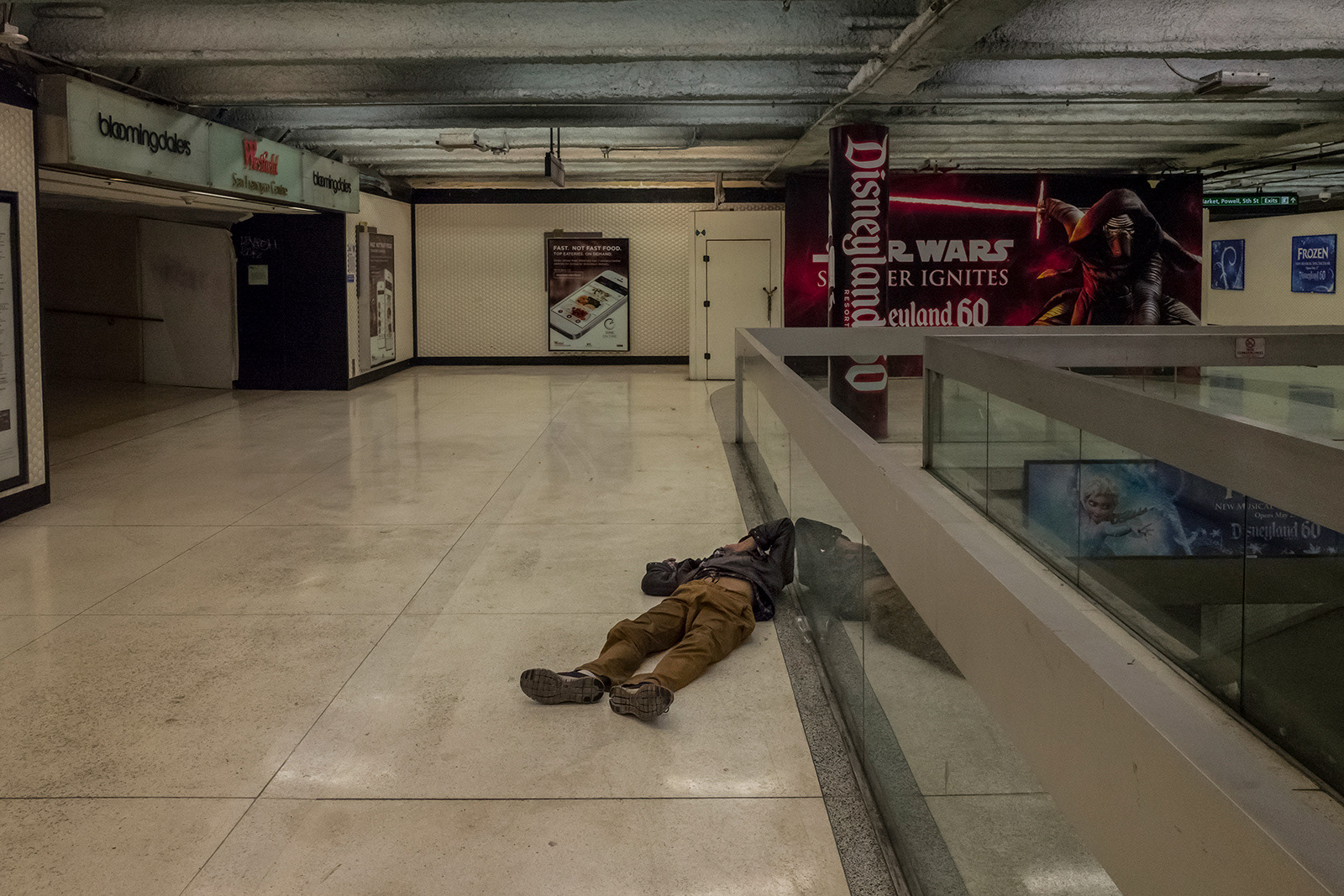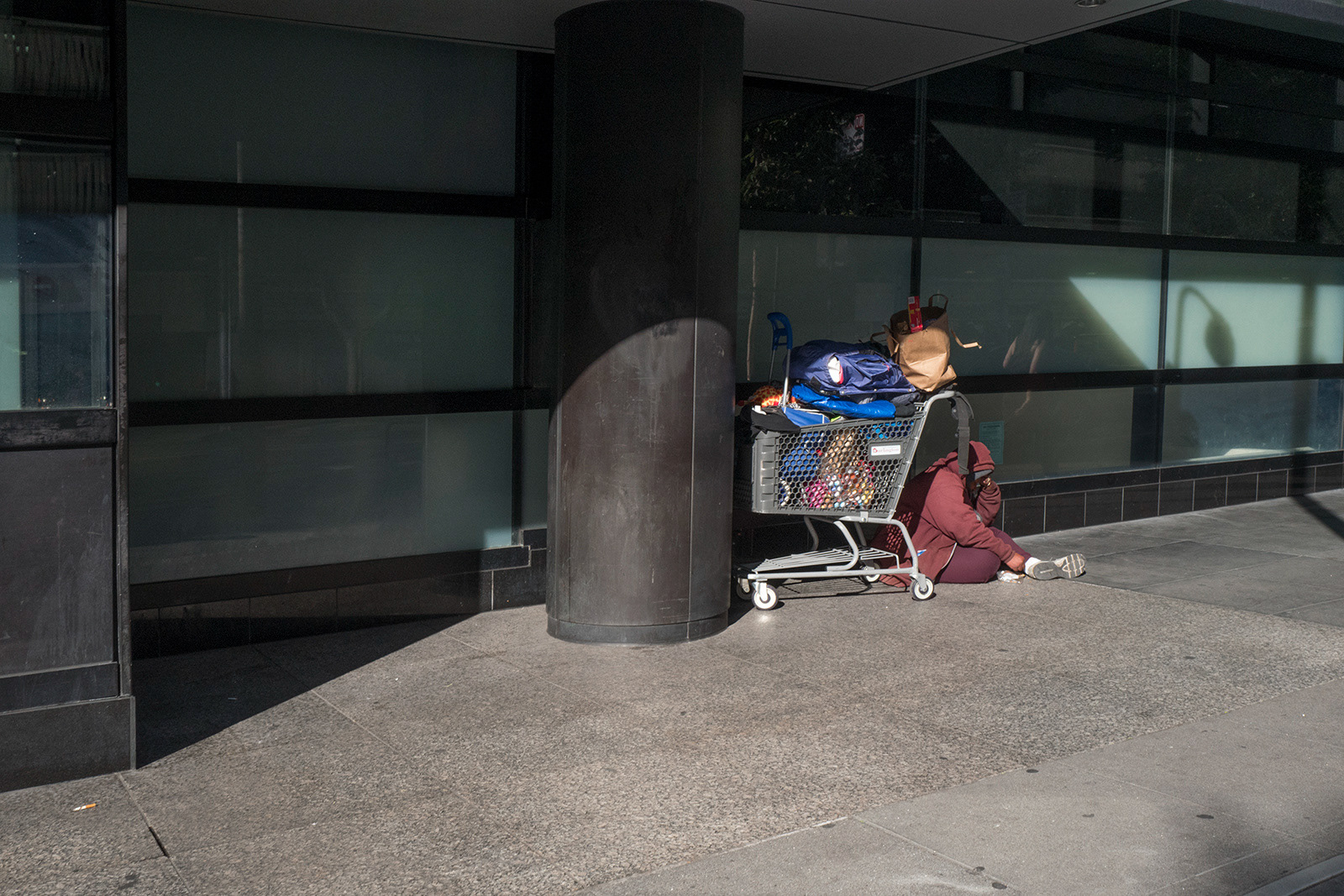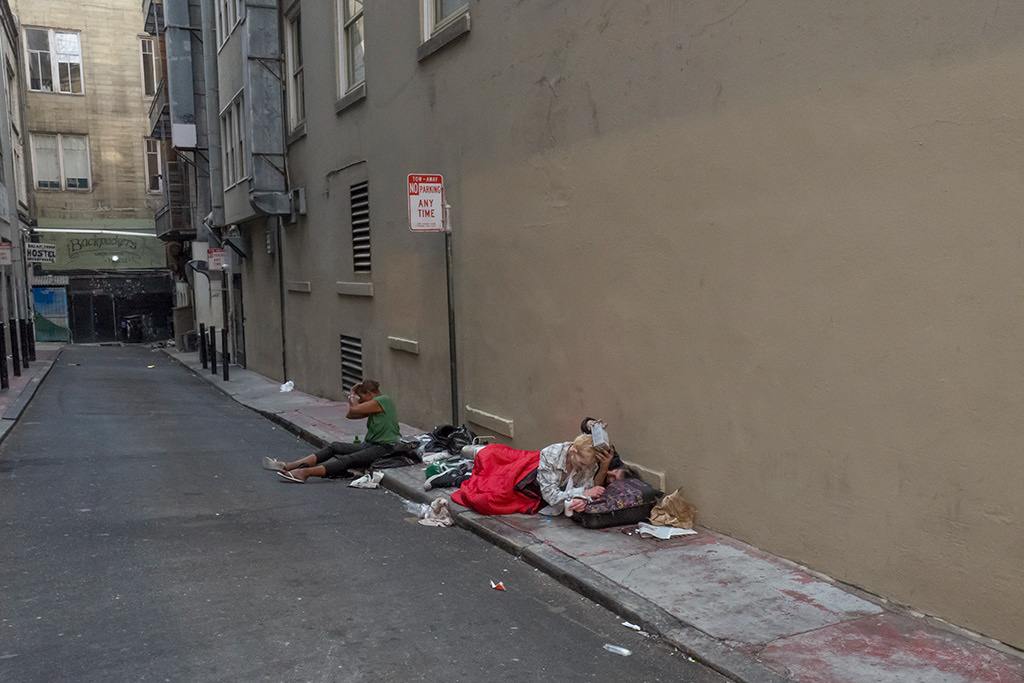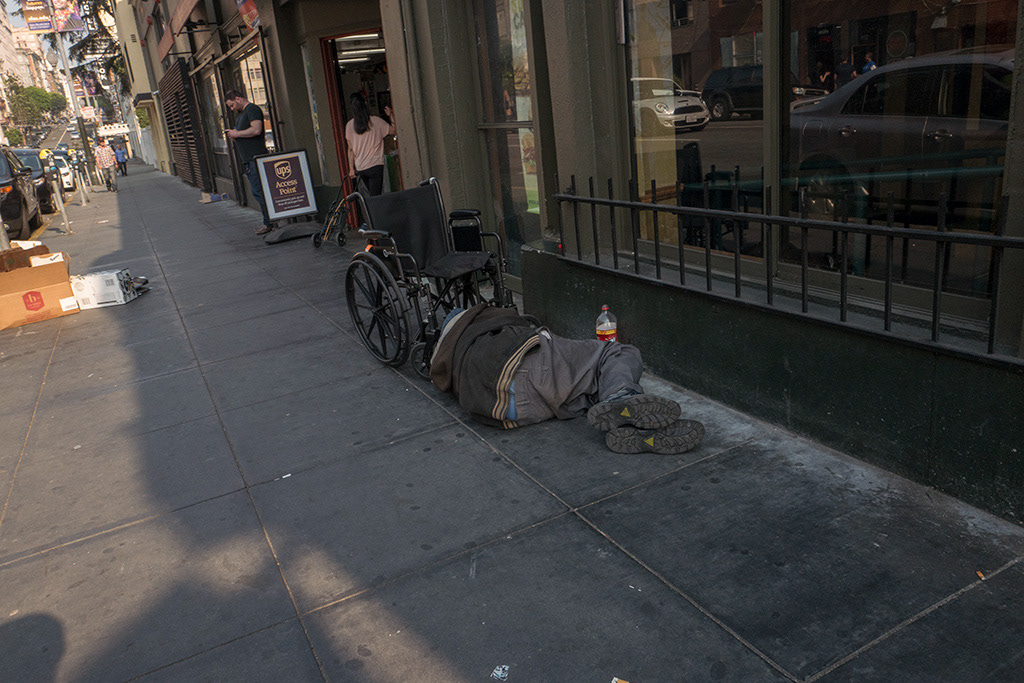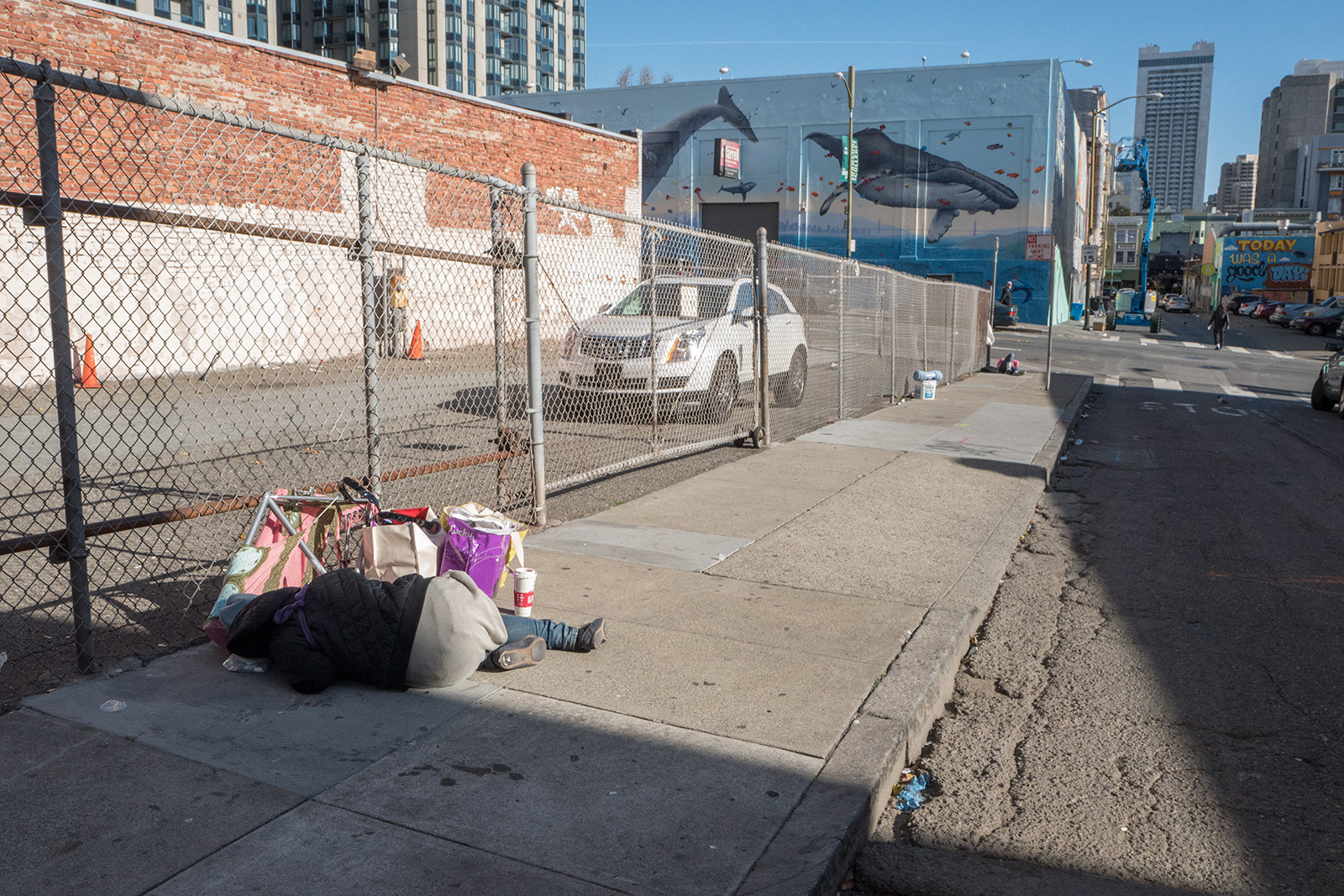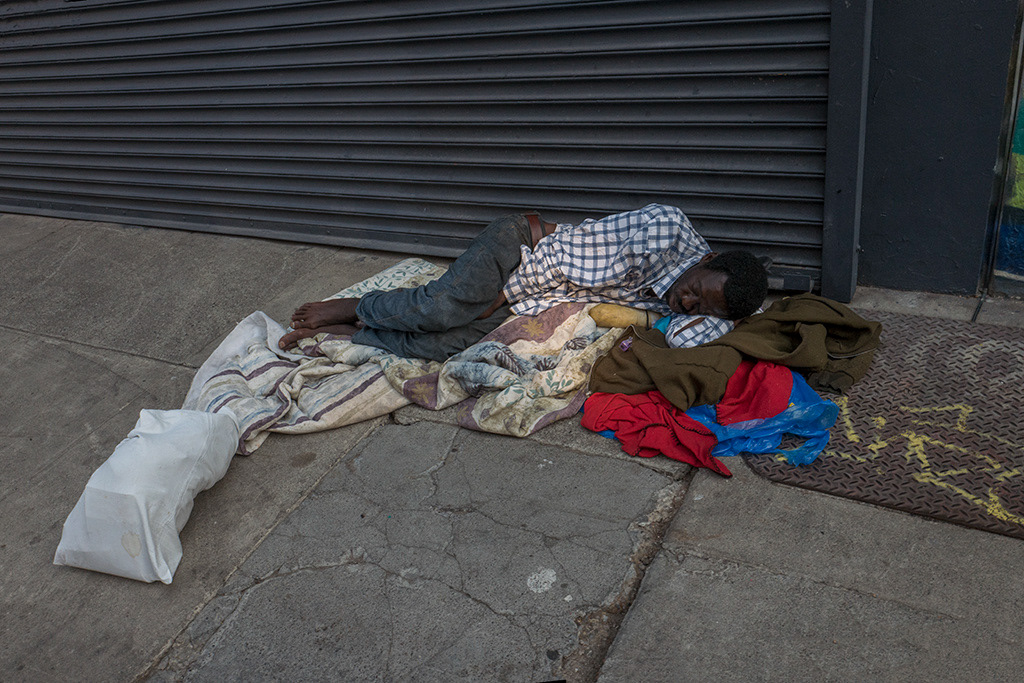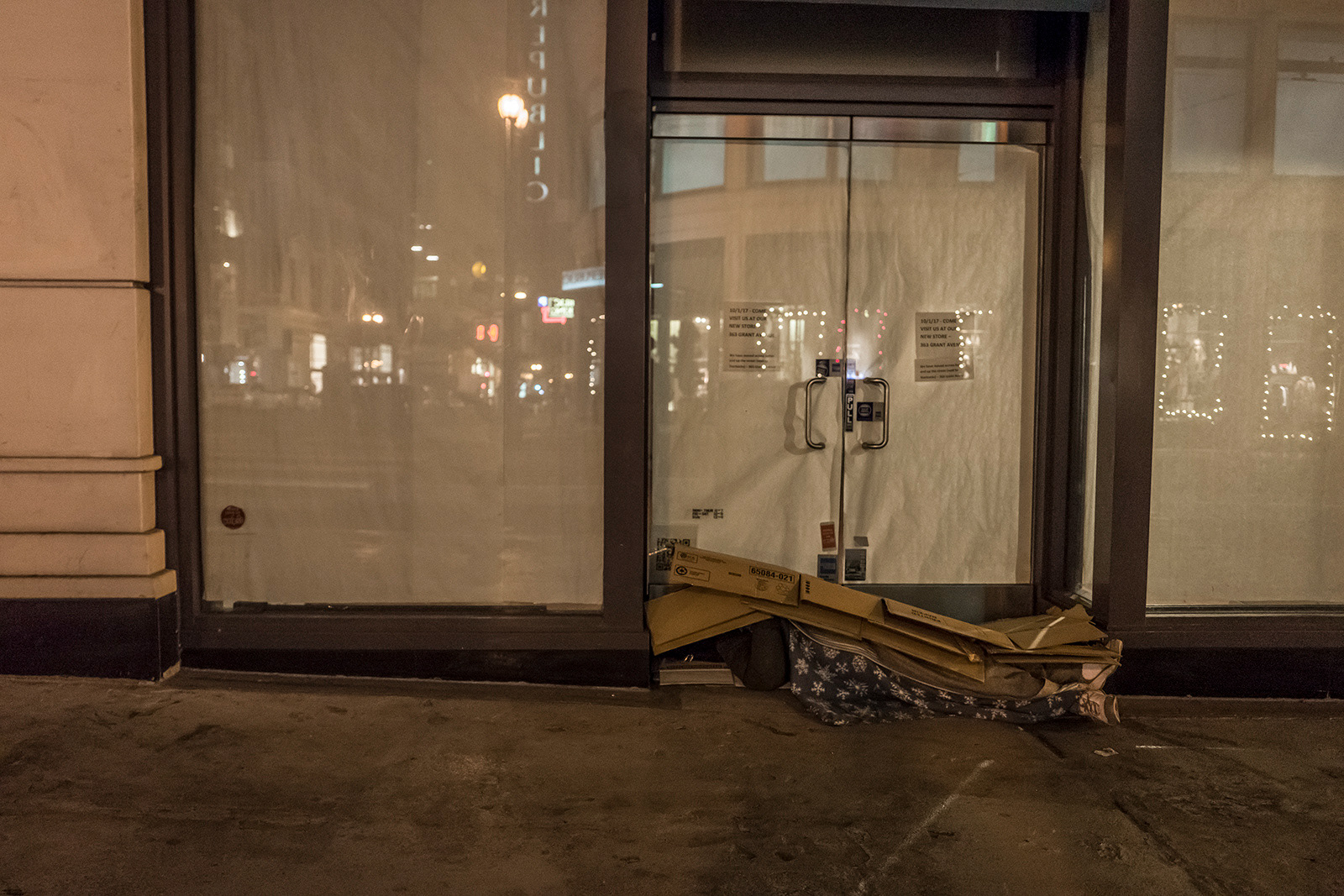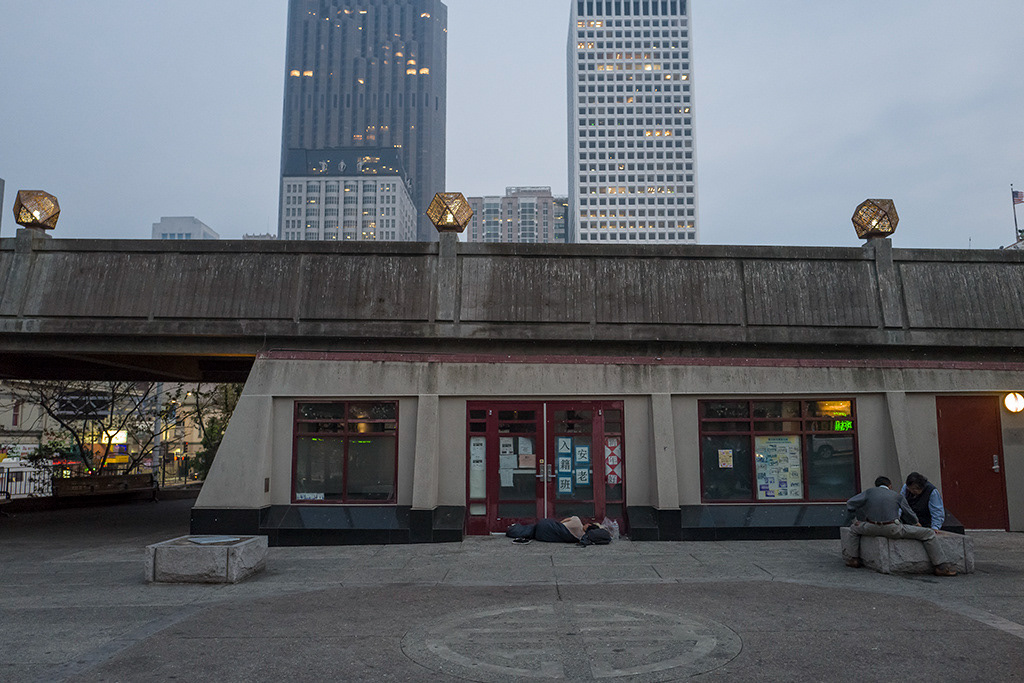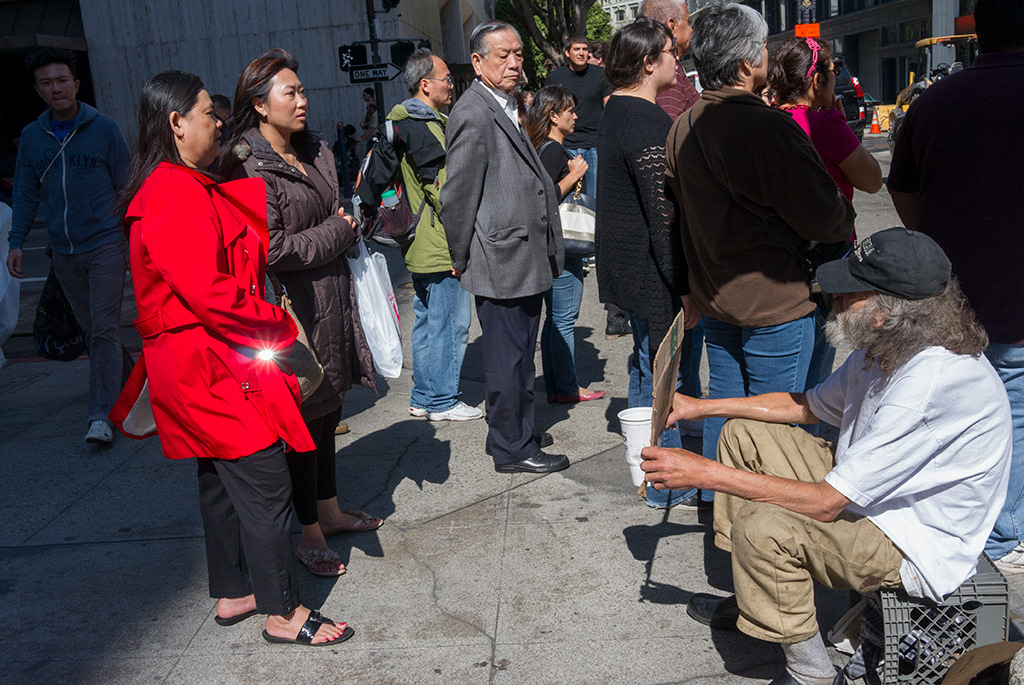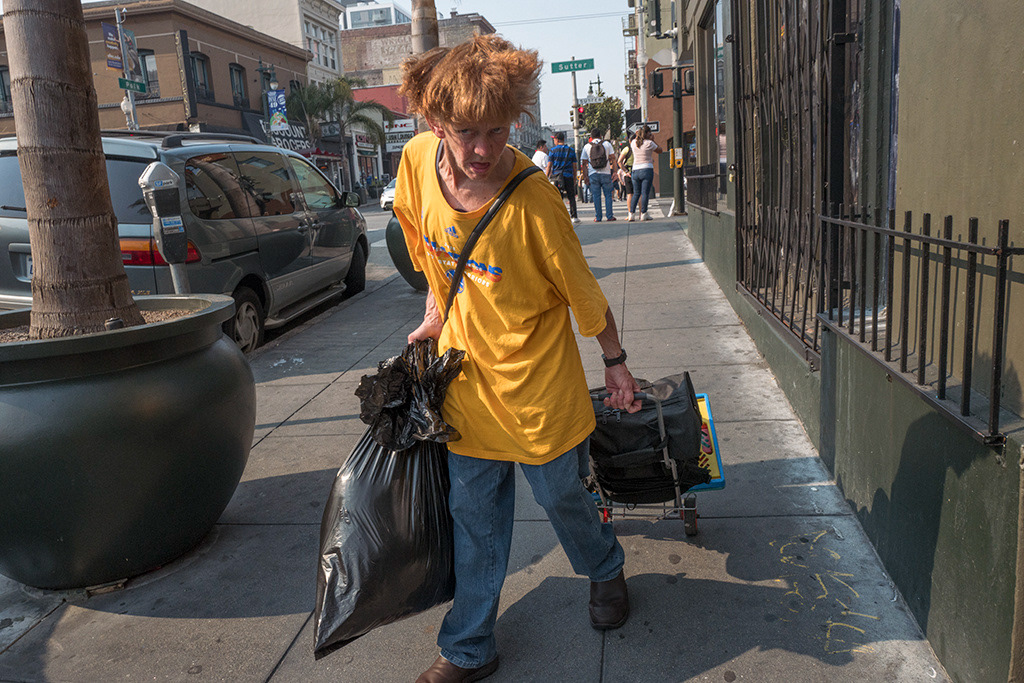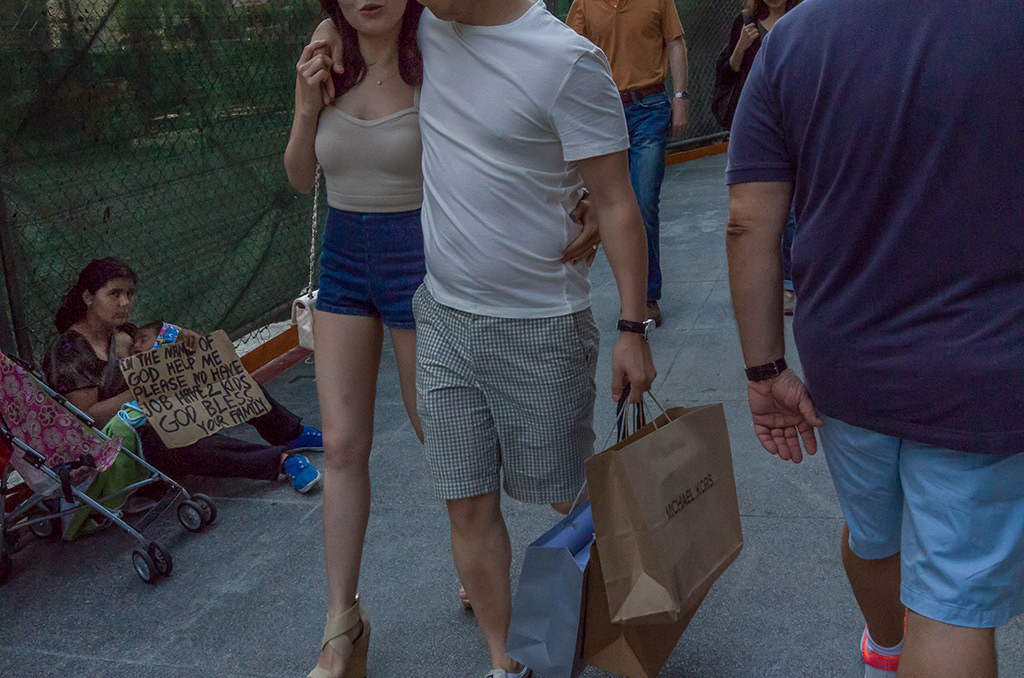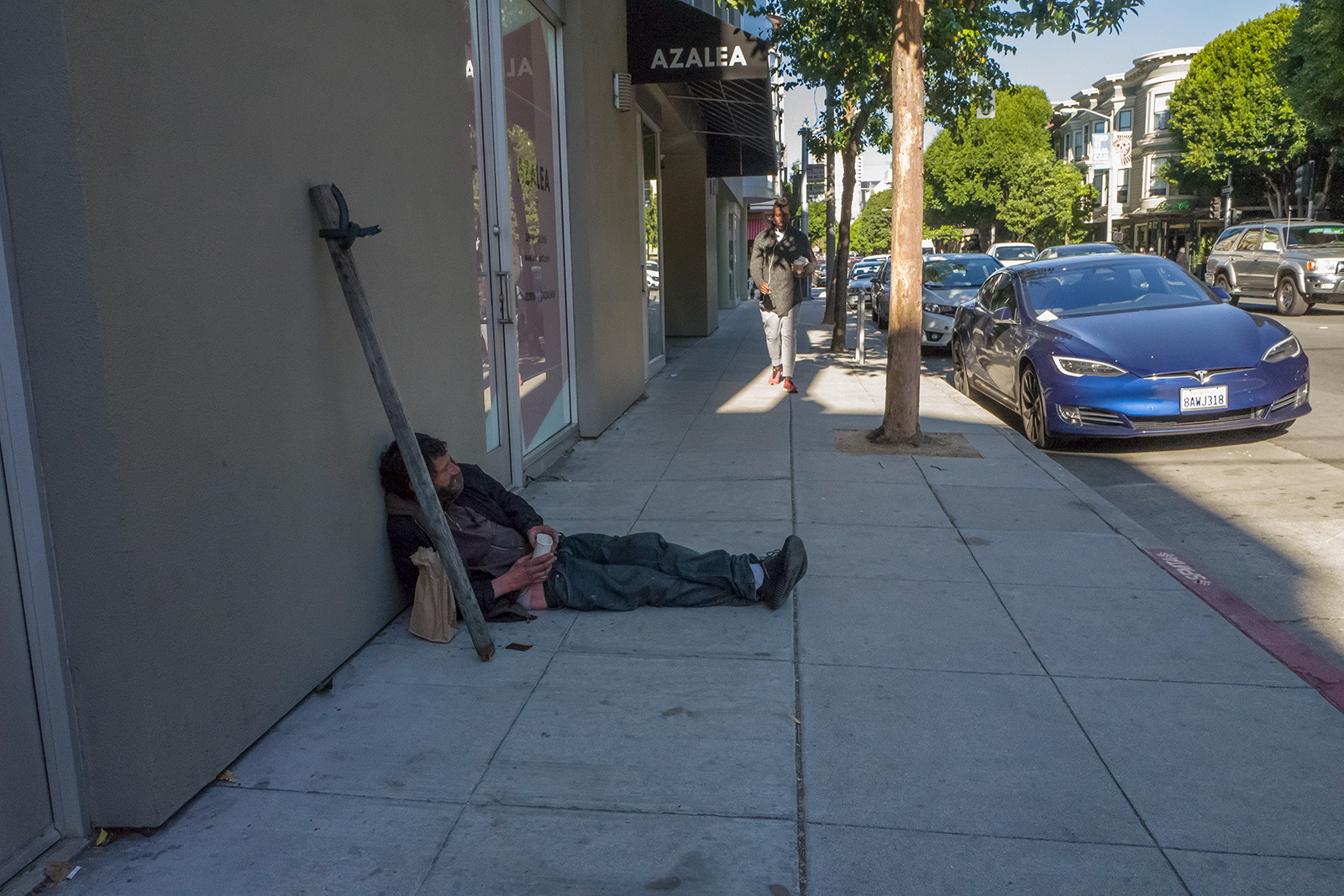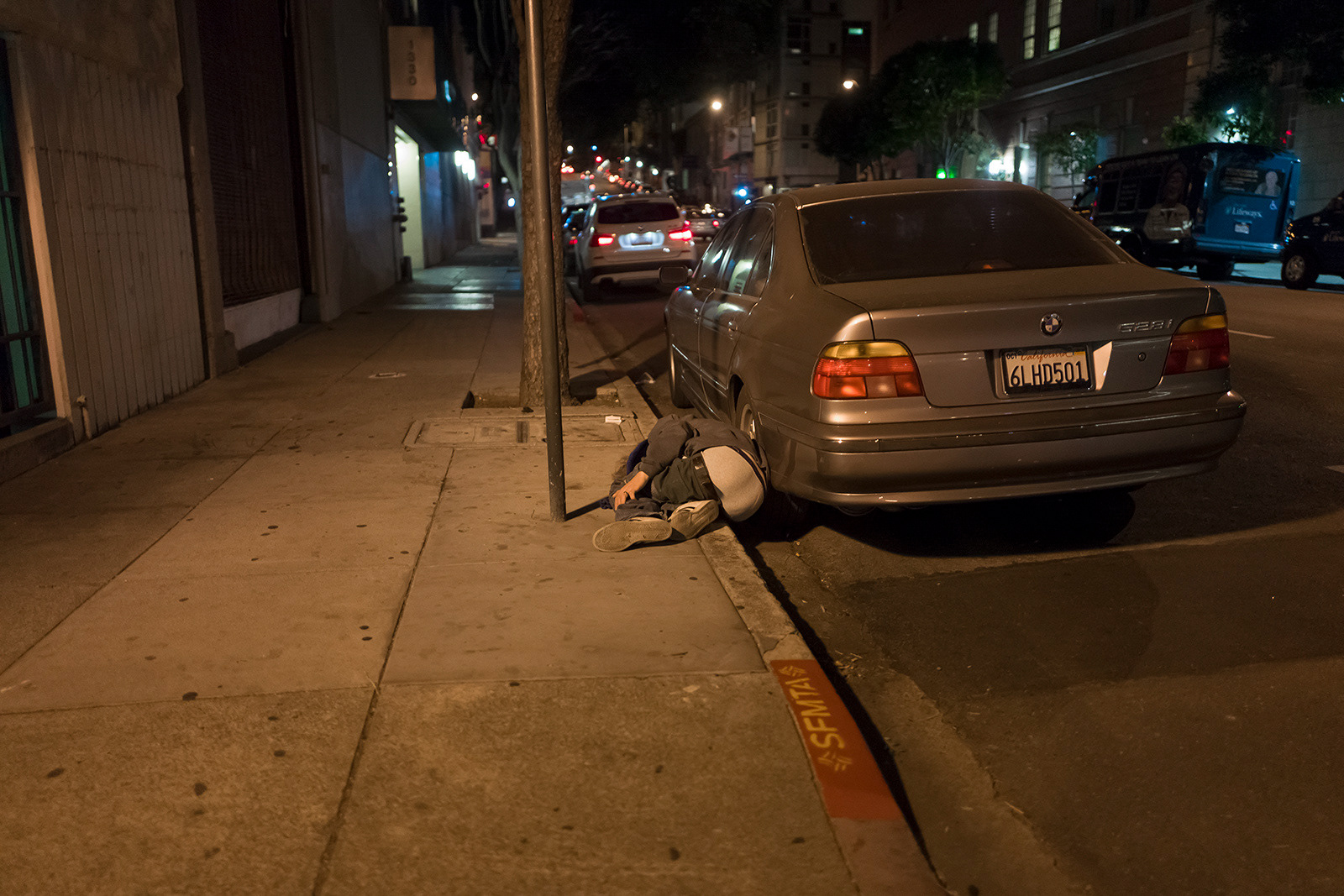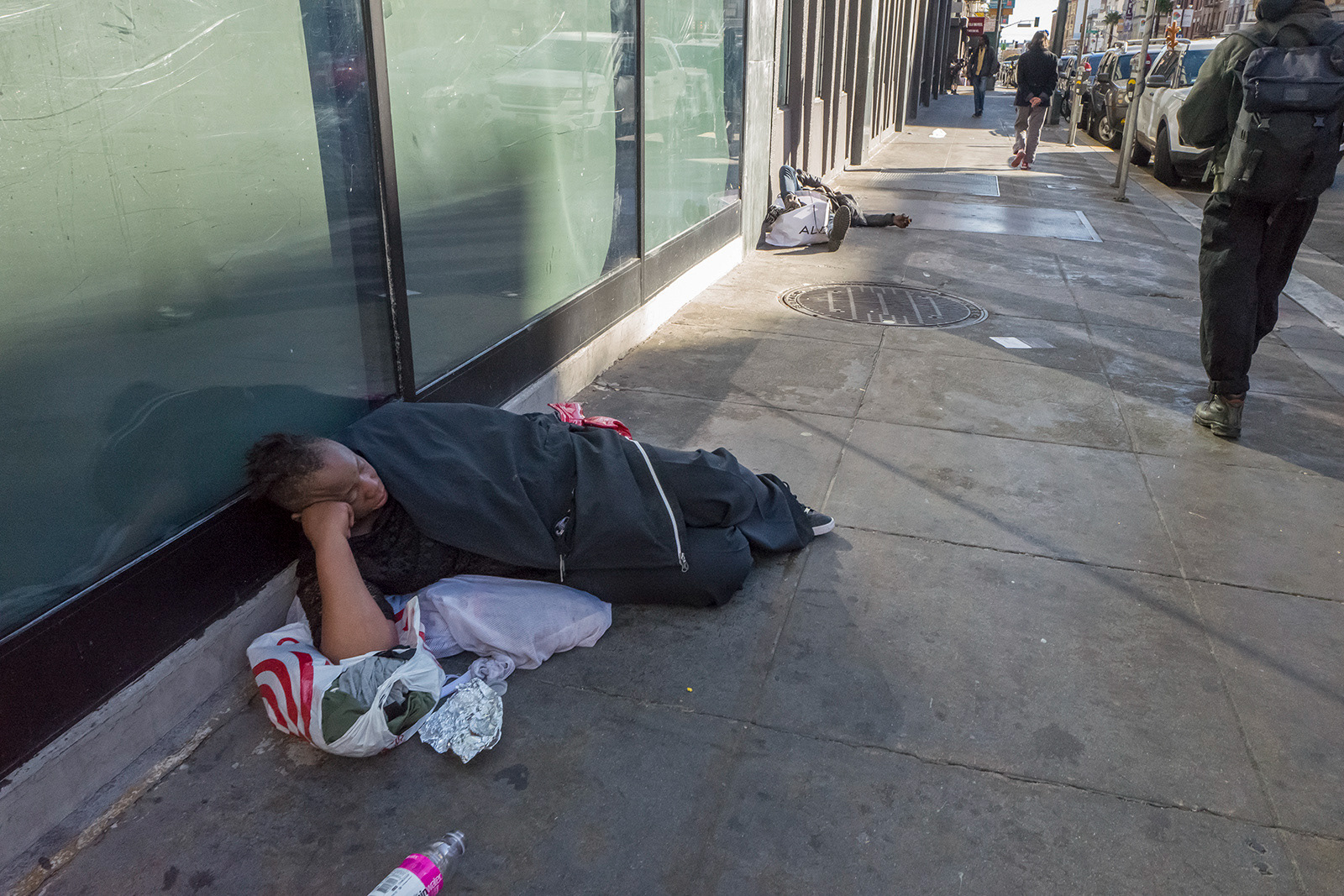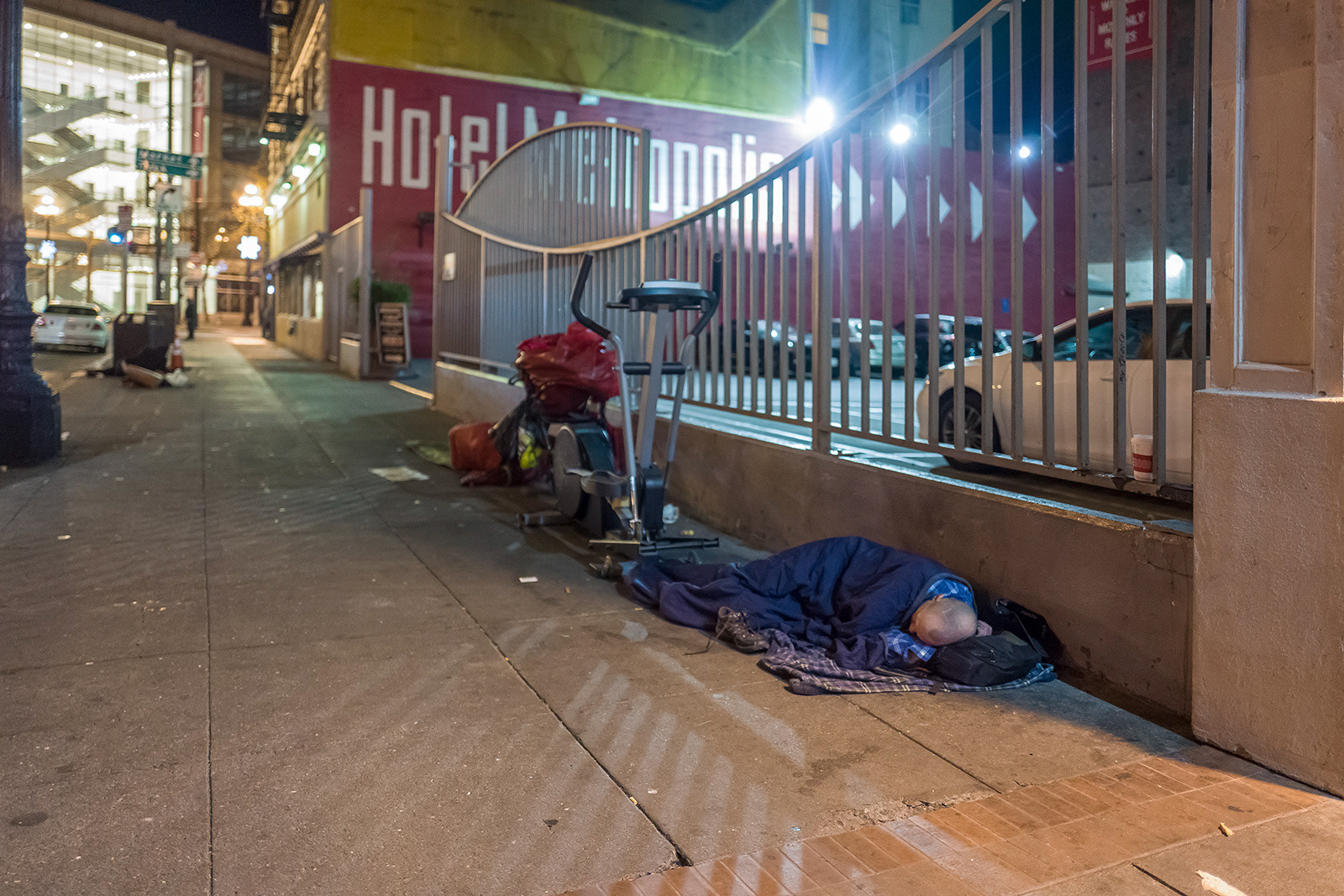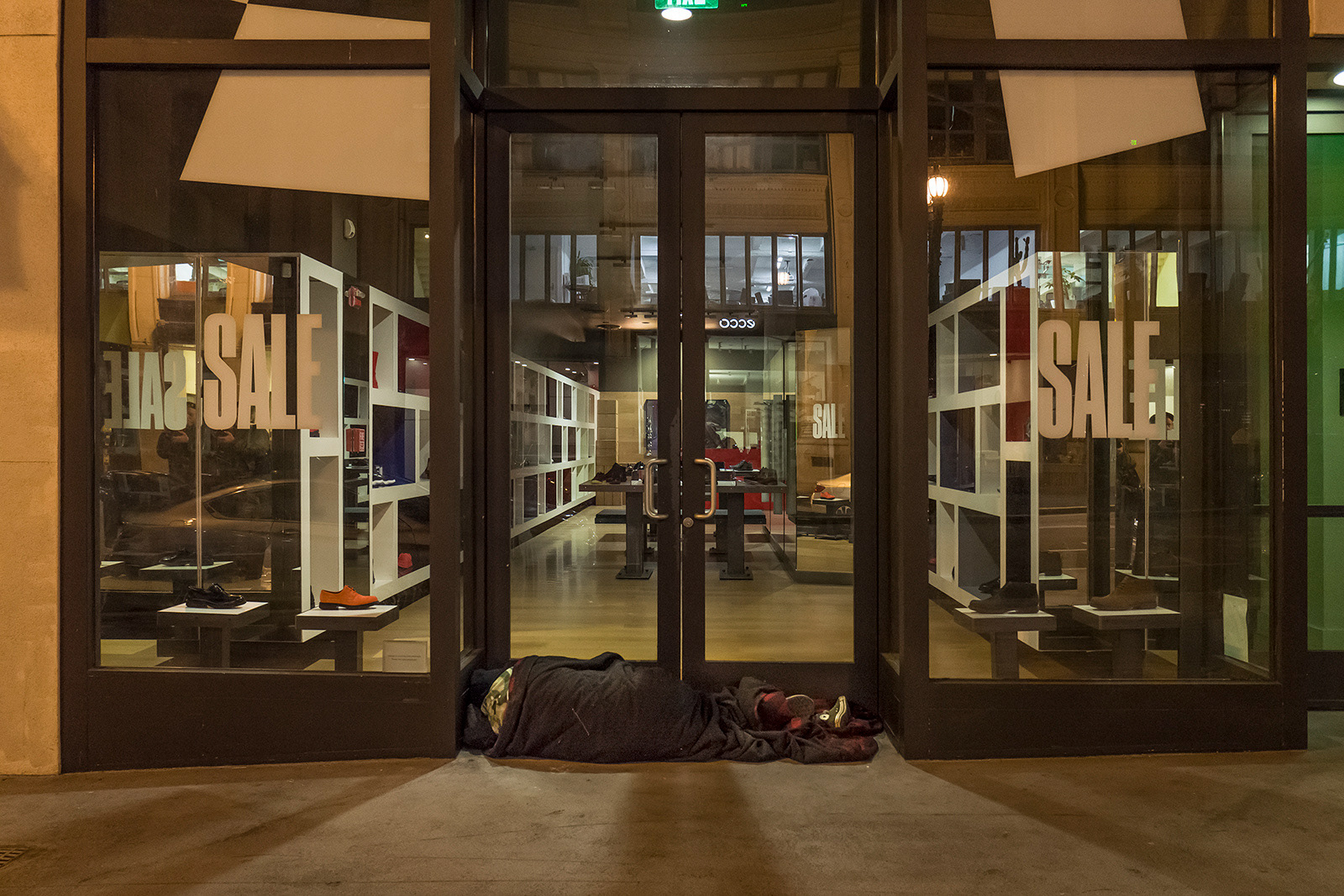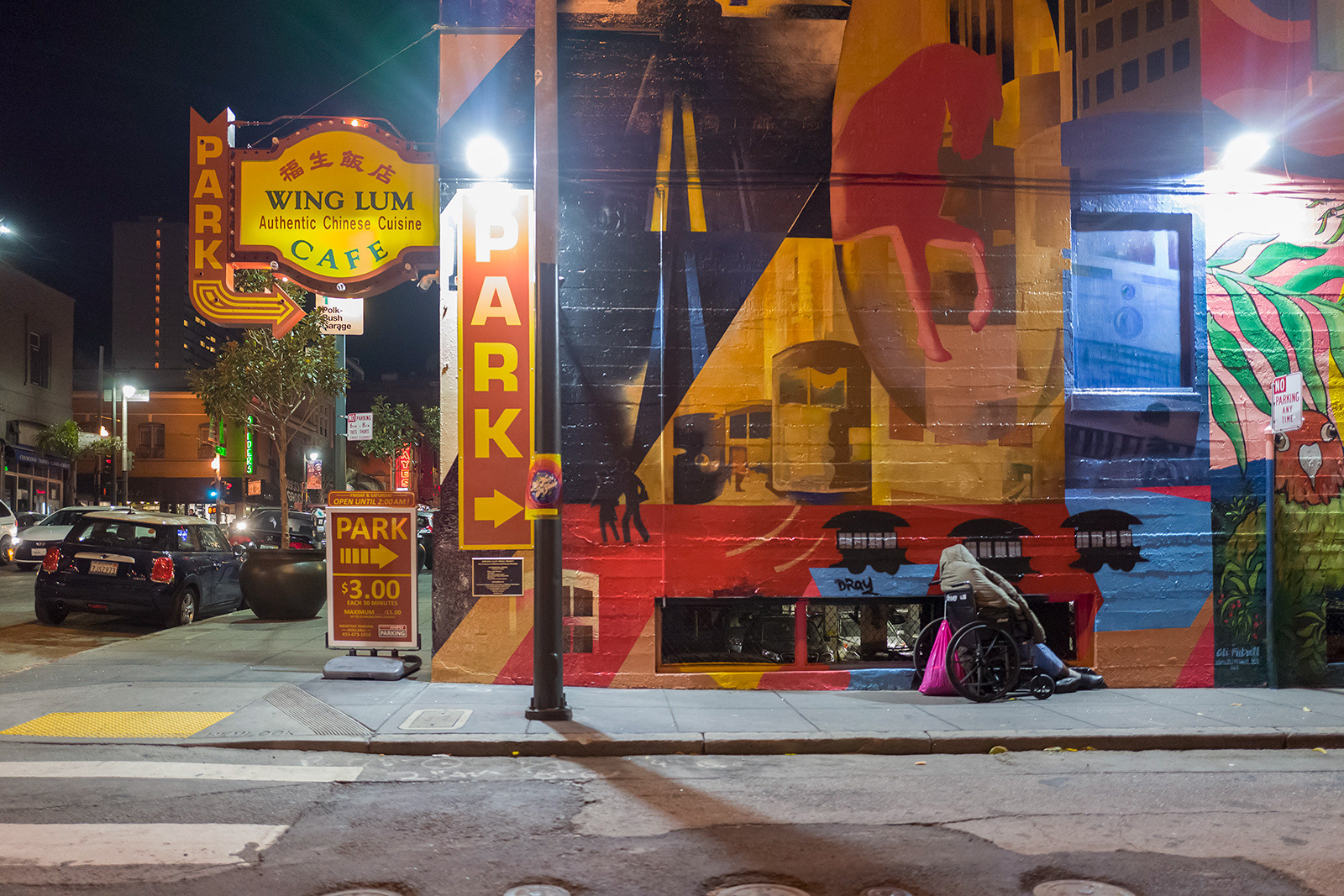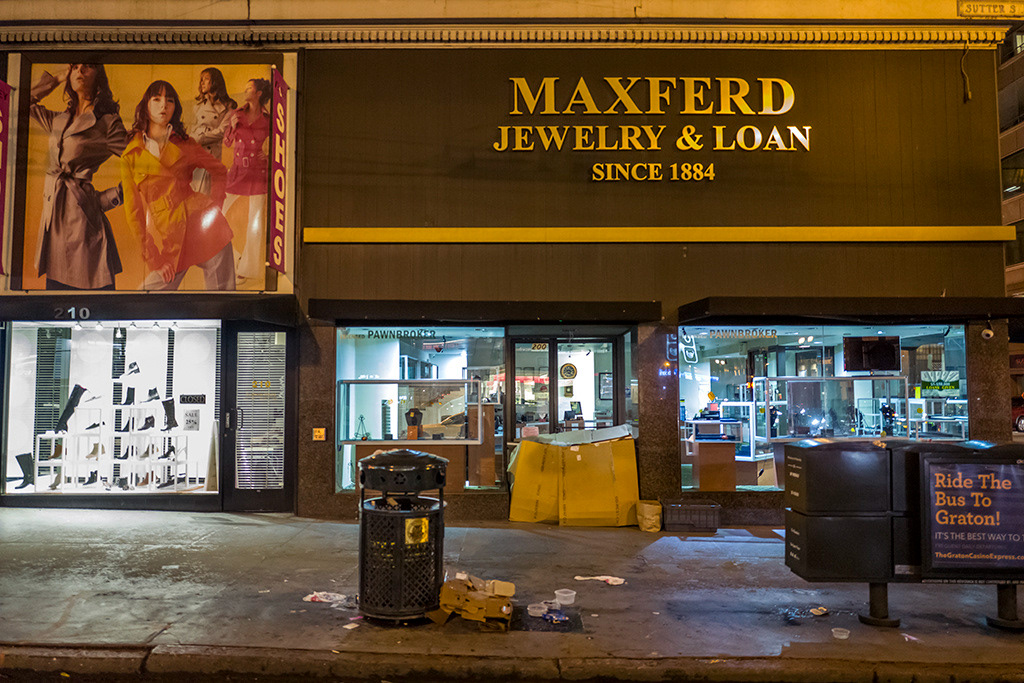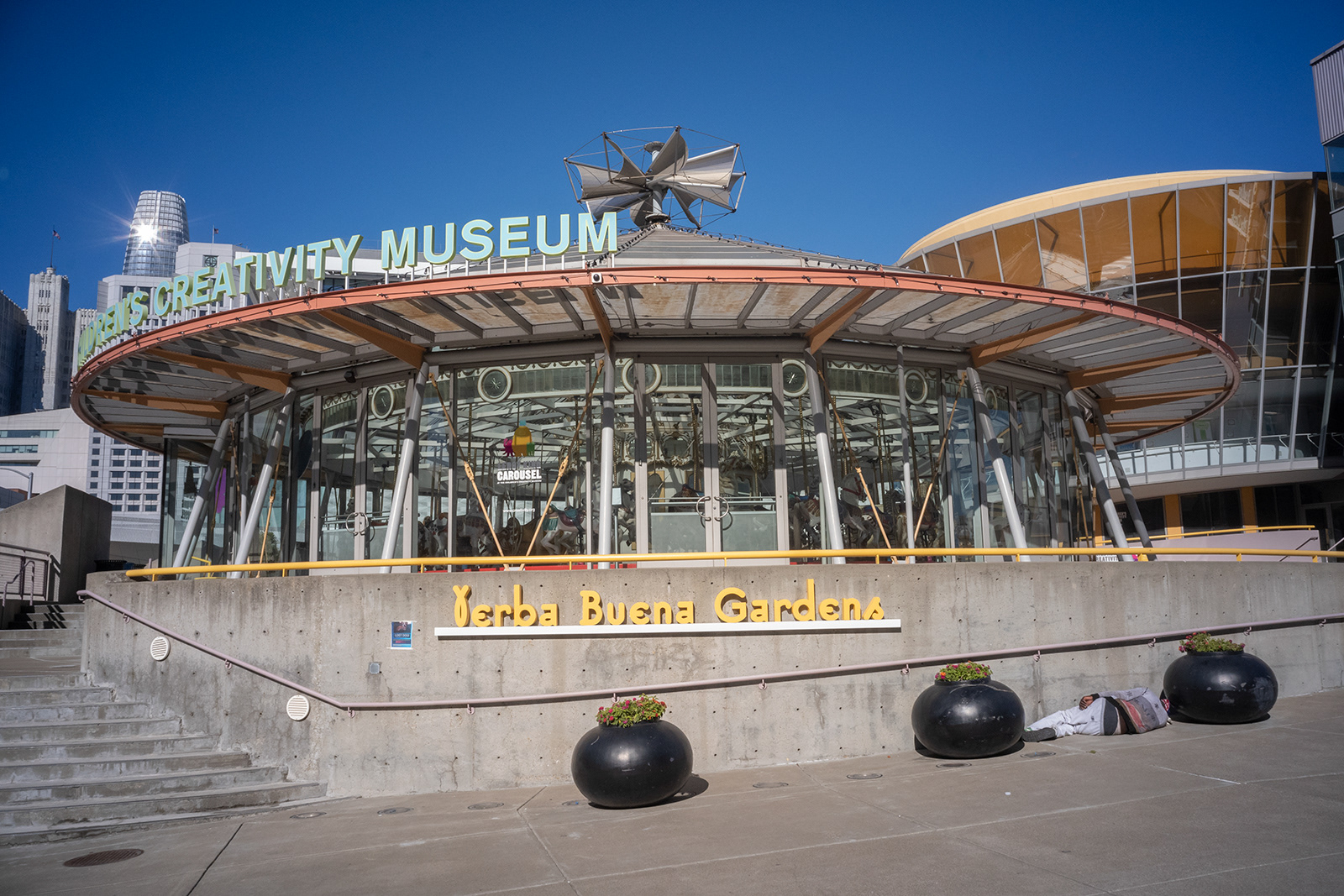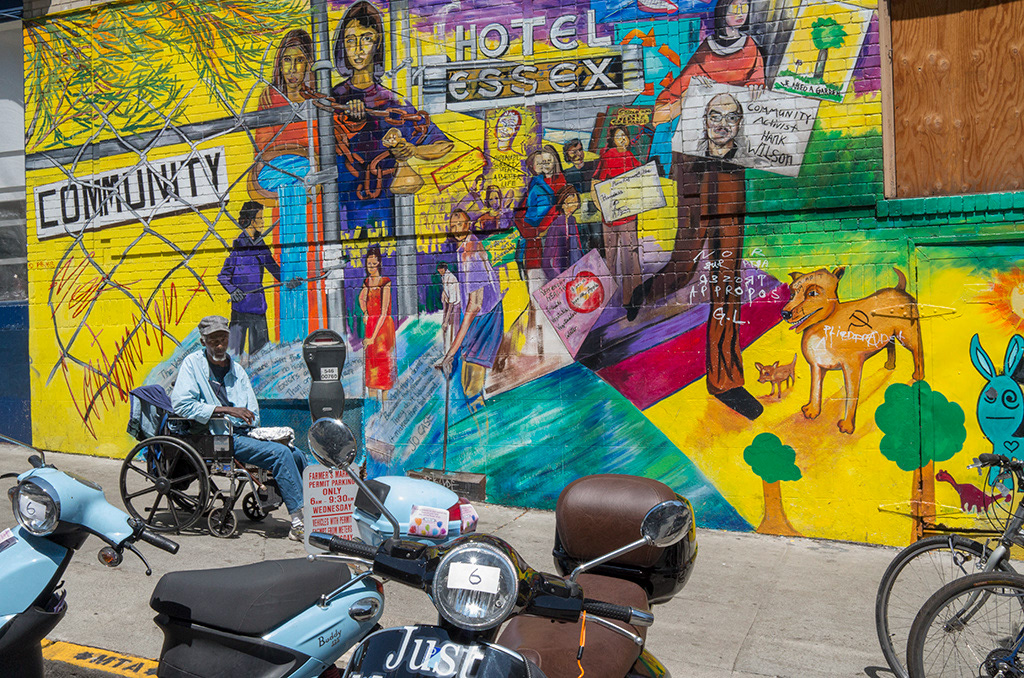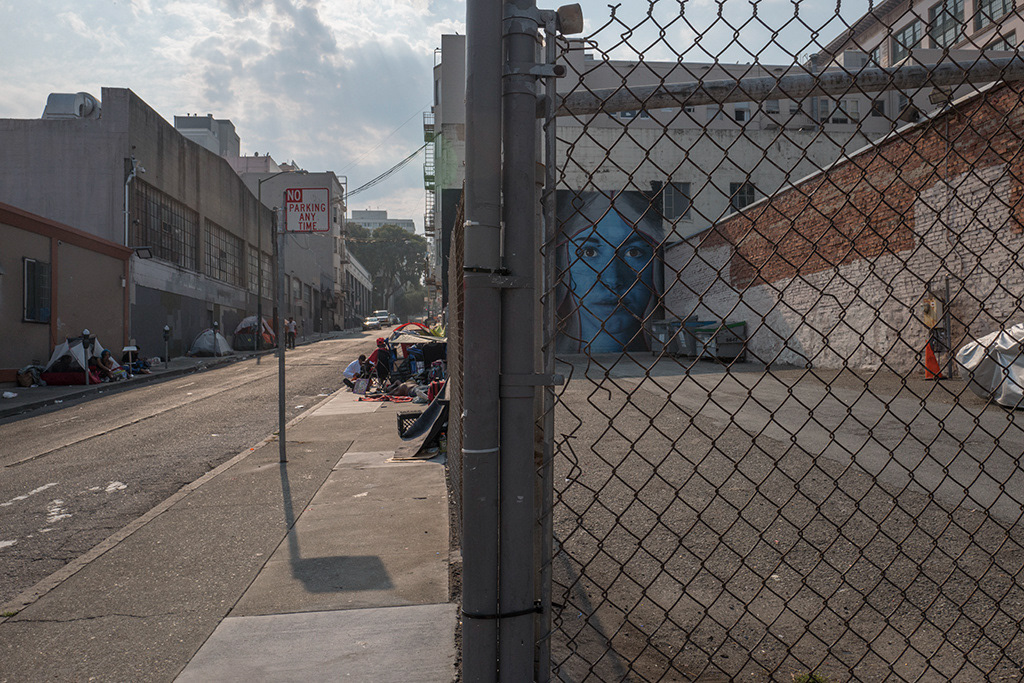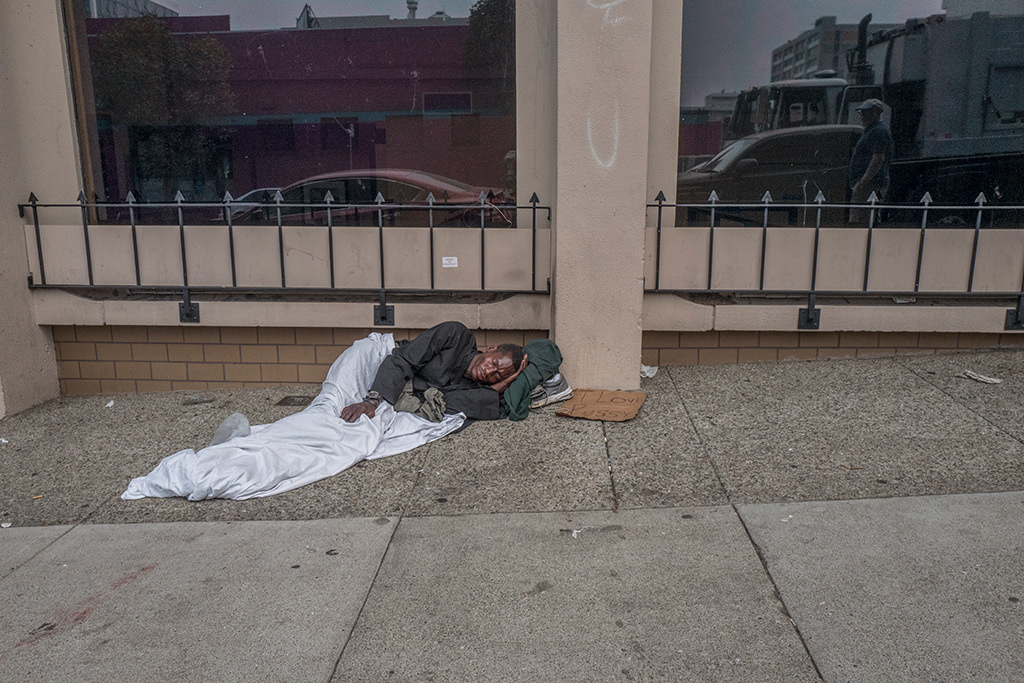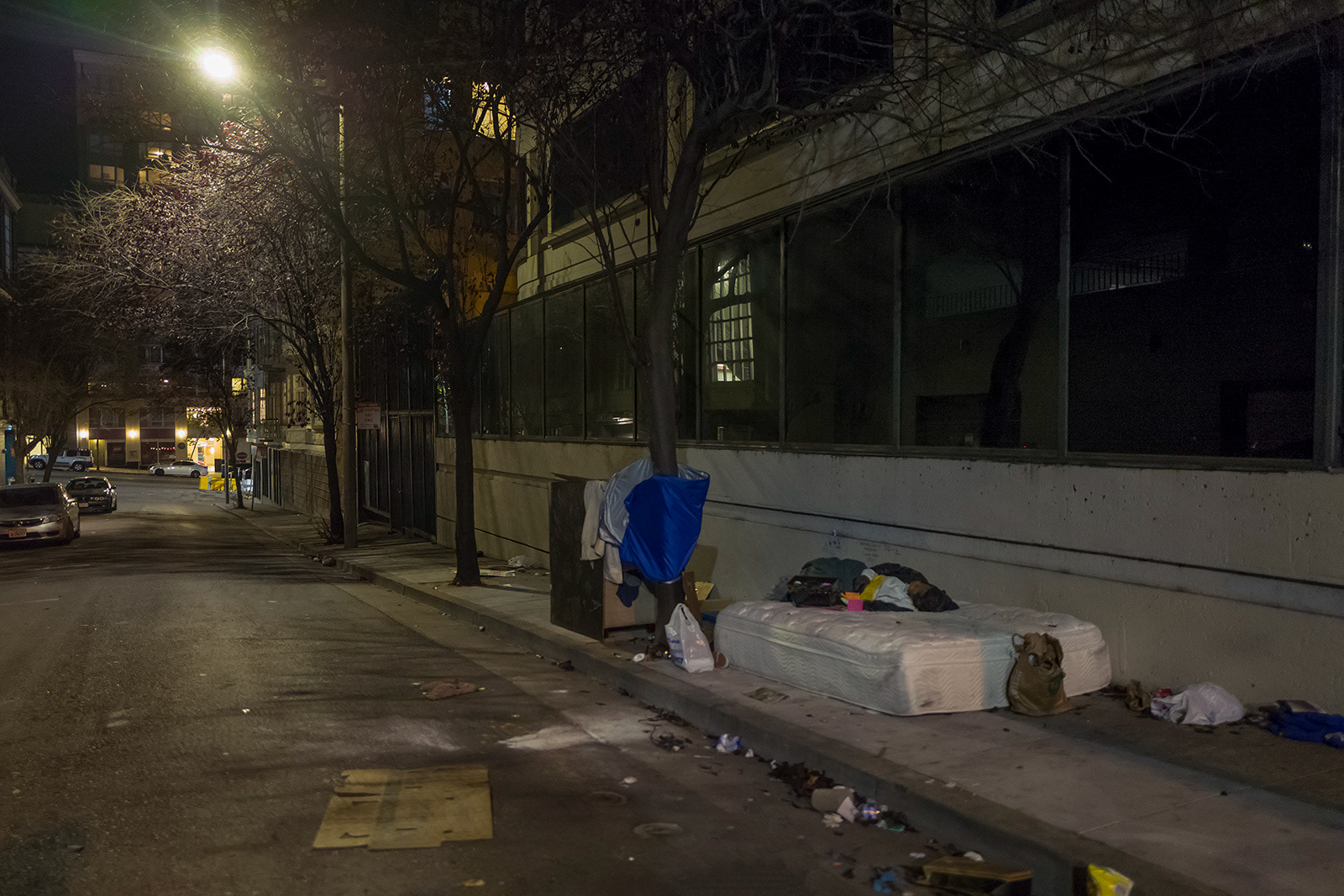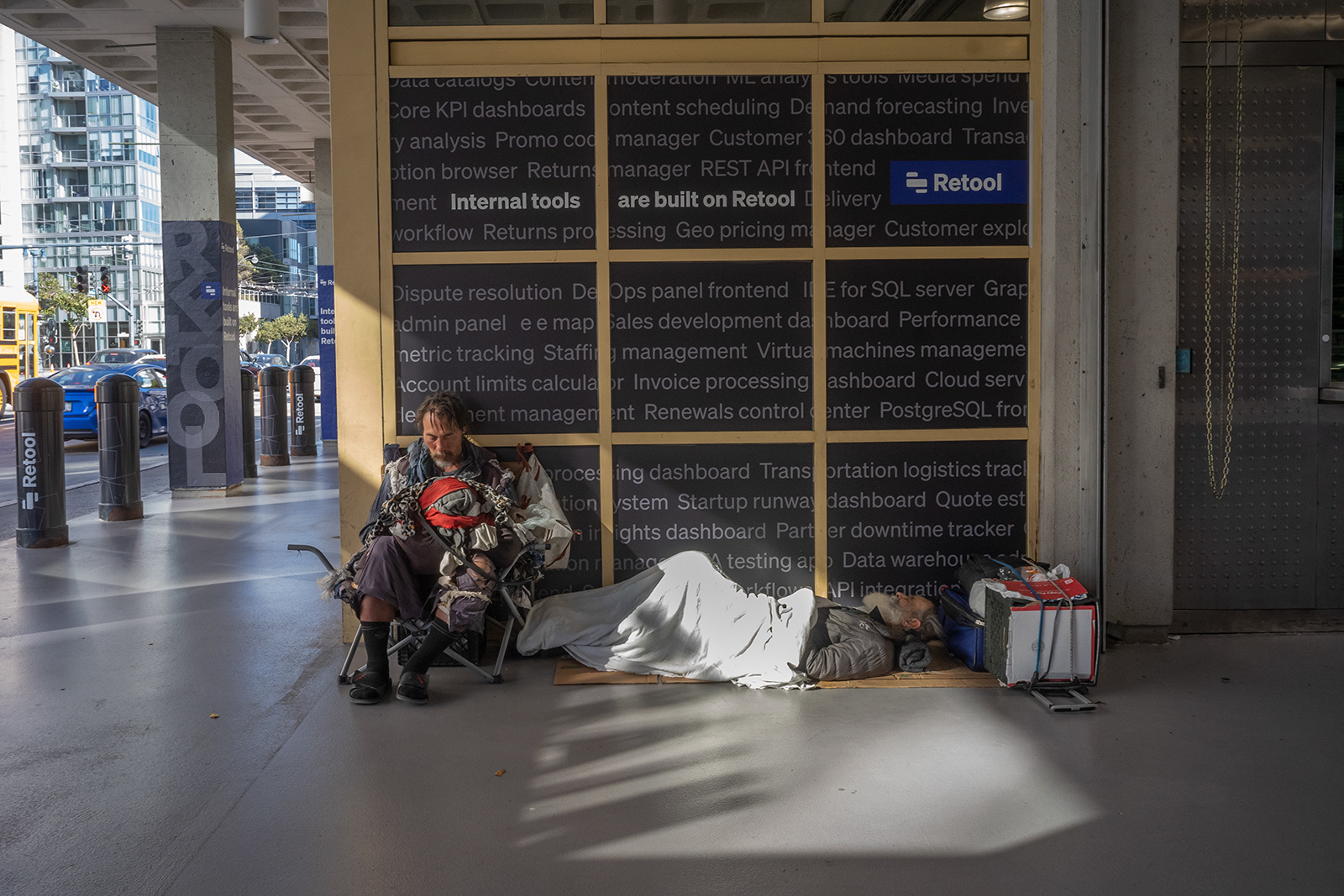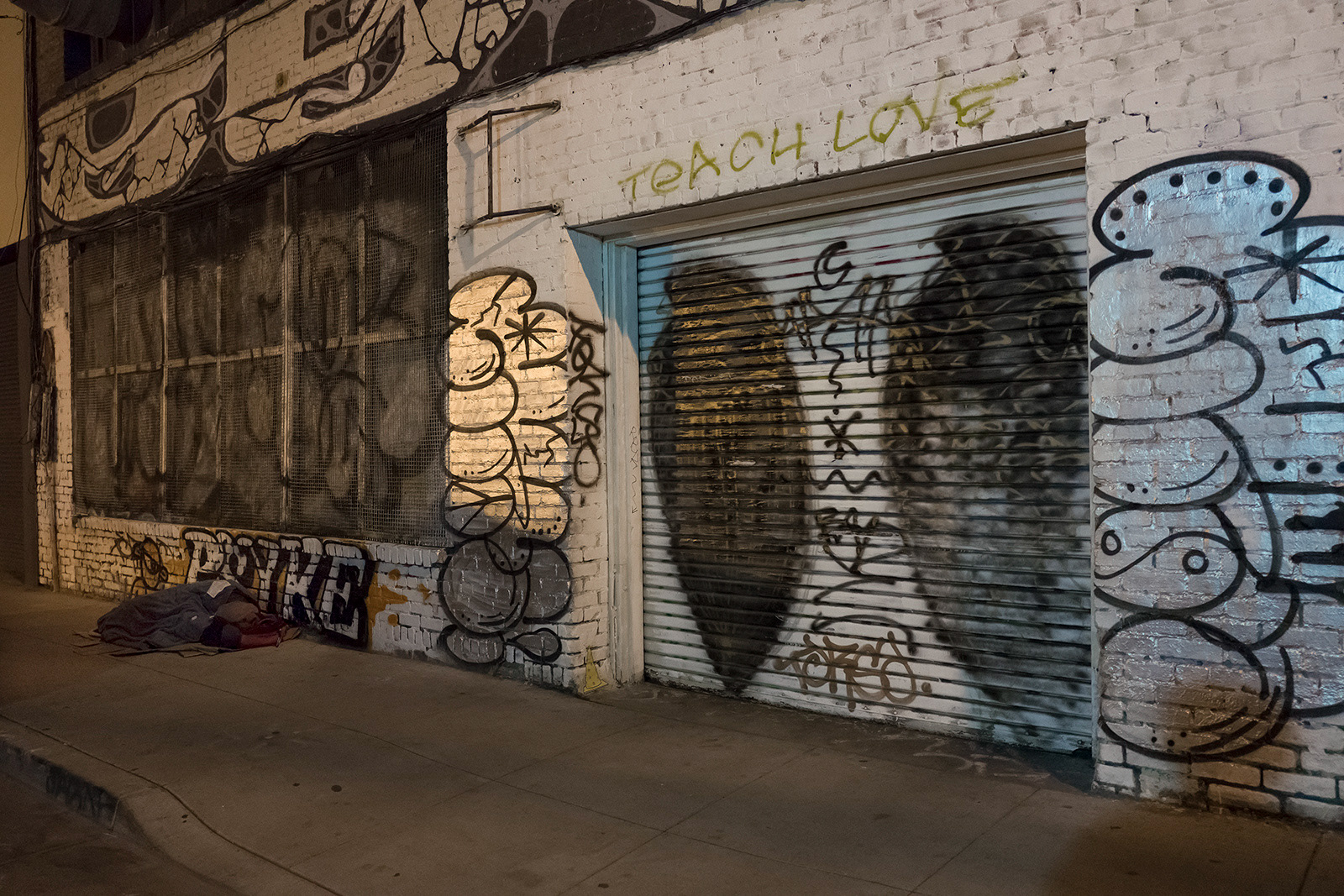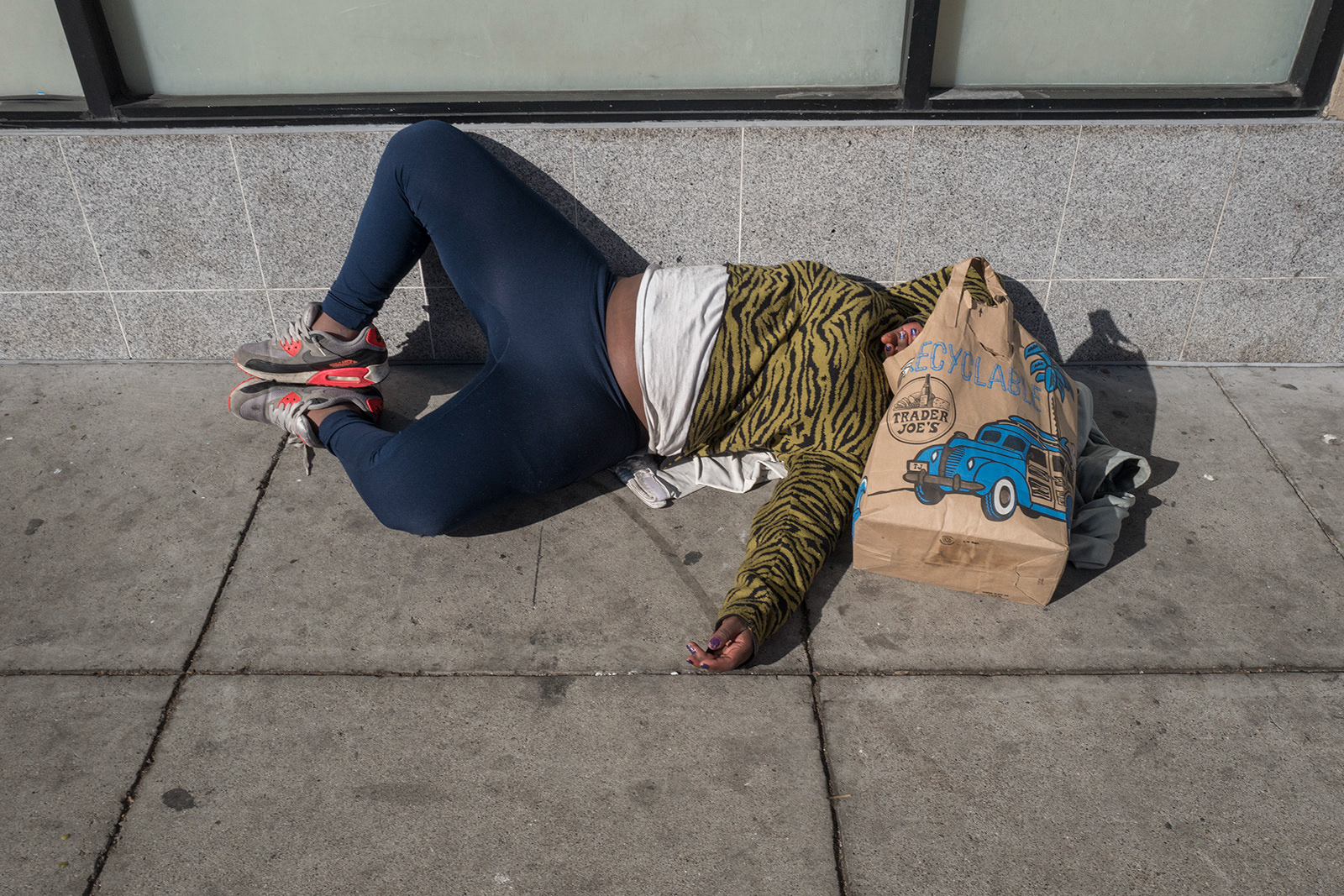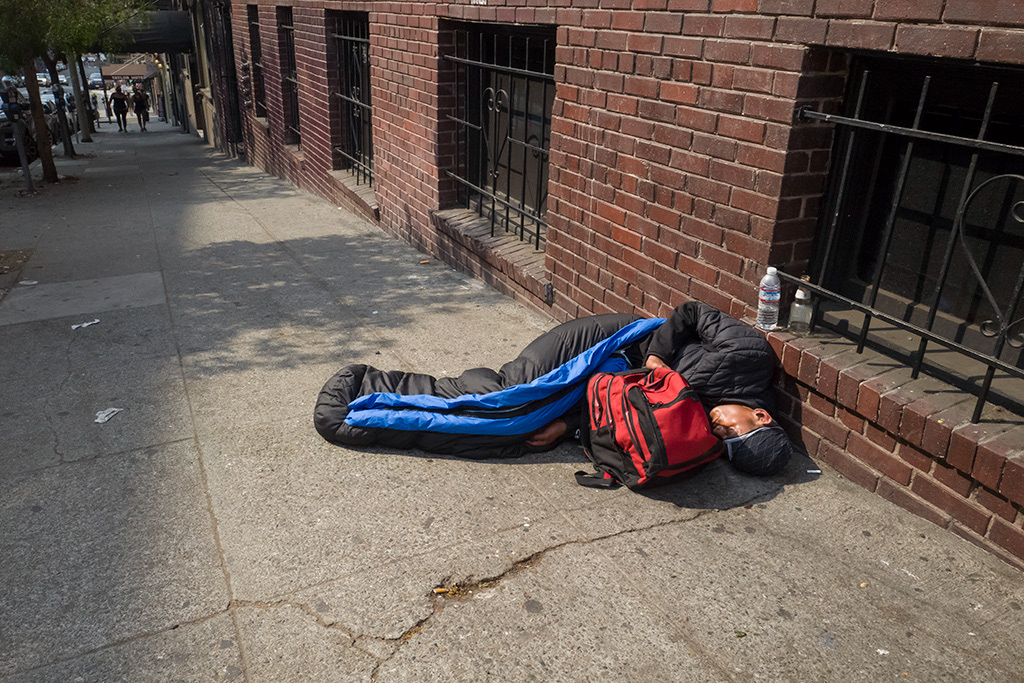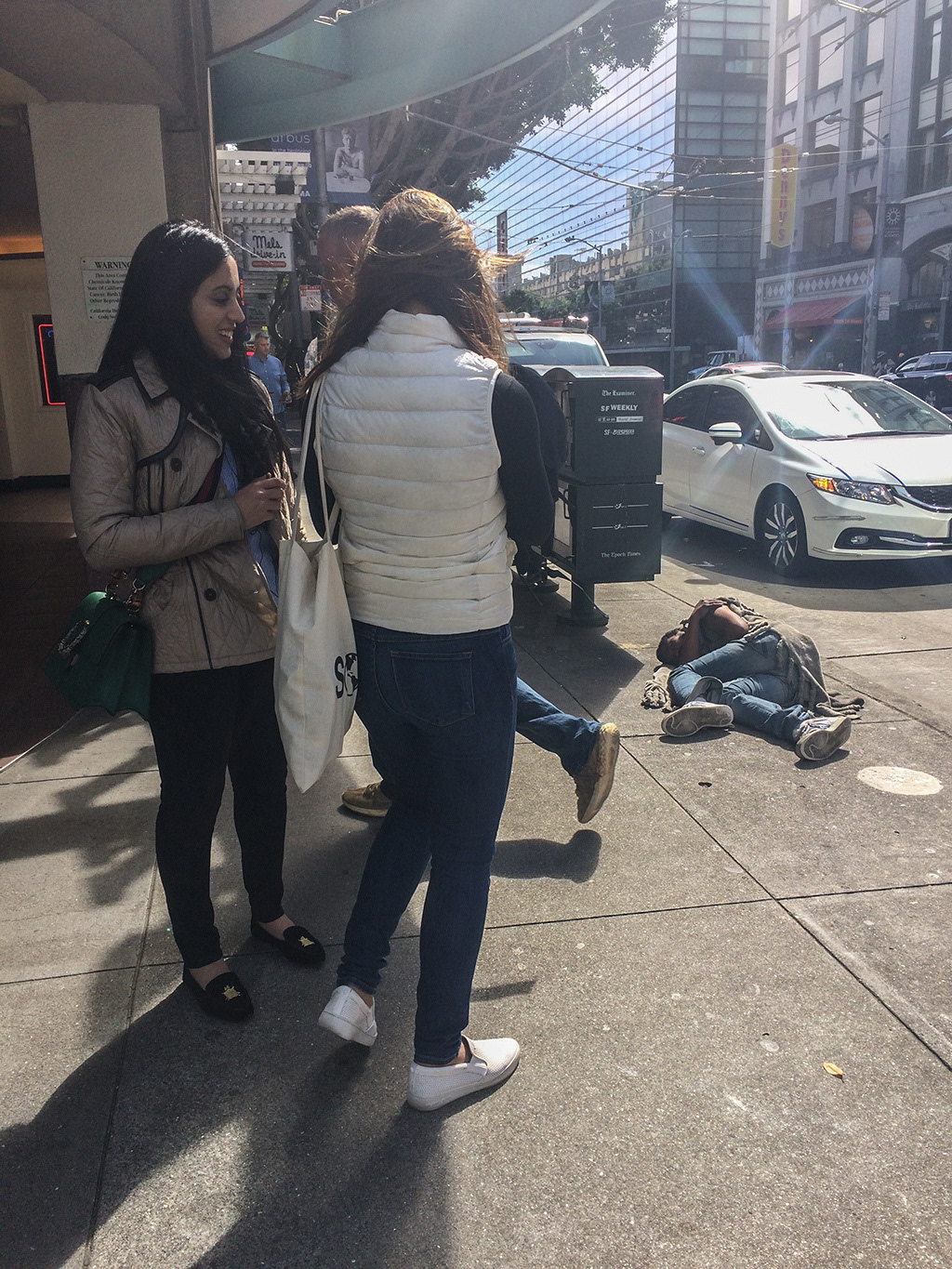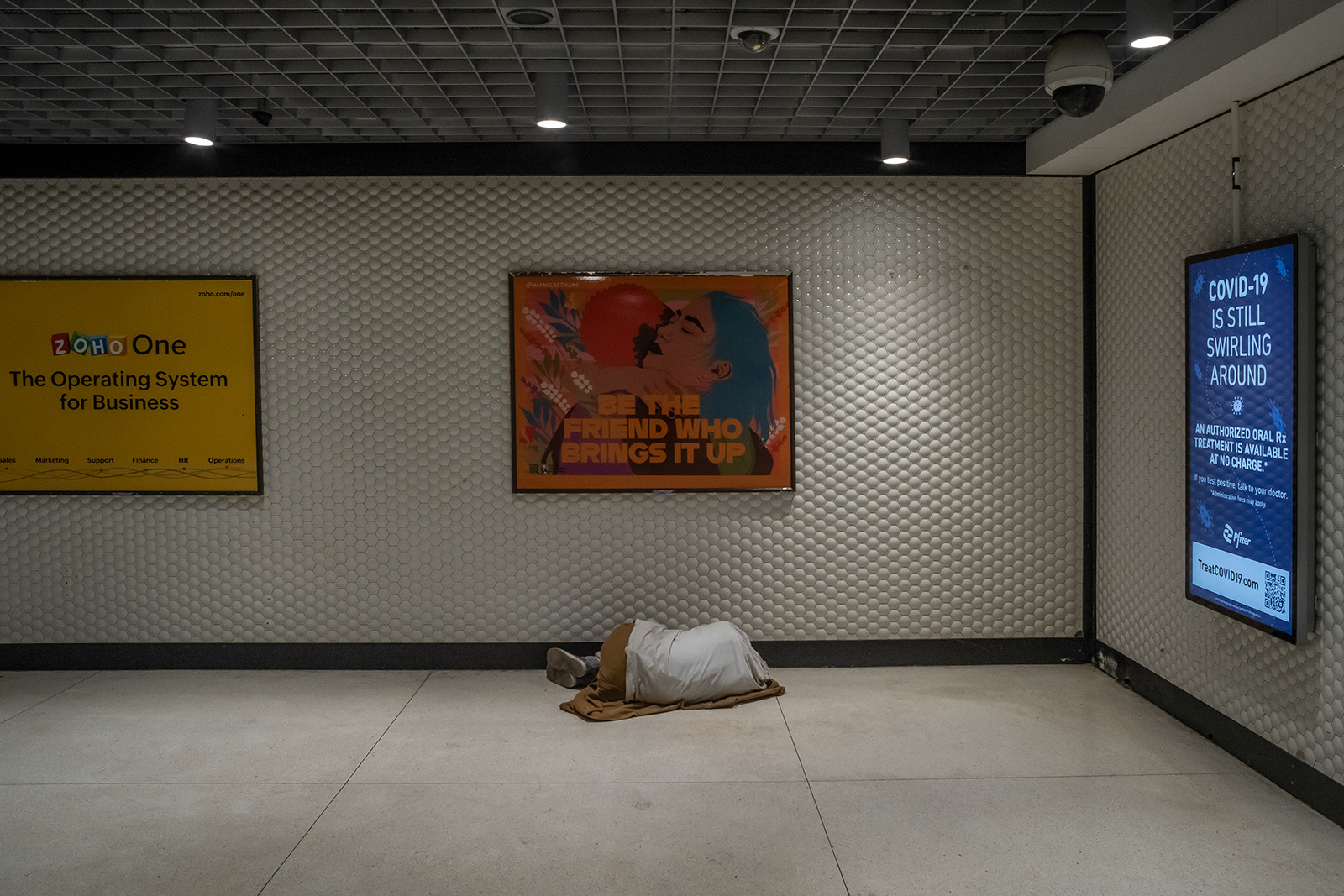There is no respectful way to photograph homelessness in America. On the one hand, to photograph the homeless as homeless is unavoidably voyeuristic. It risks making a spectacle of their plight, reducing them to their misery, fixing them in the condition of their suffering and humiliation––and very often goes beyond mere risk, actually accomplishing these miserable effects. On the other hand, not to photograph the homeless as homeless risks overlooking their suffering and normalizing it, which is precisely the situation they contend with daily as marginalized and often invisible people. A similar aporia attends the question of impact. On the one hand, making a photograph of the homeless changes nothing, less even than giving a little money, and on the other hand, not making a photograph is tantamount to looking away and pretending not to see.
Some photographers cope with this situation by making portraits of heightened drama. Others make portraits that resemble classical painting, as if to lend inward dignity to those leading outwardly undignified lives, not to mention public indignity. Others make pictures from a certain remove, as a way of establishing a visual no-entry zone, as if to endow the homeless with a sphere of privacy that they do not actually have. (Quite often this is my own approach.) Still others make reportage, combining pictures with stories of the lives of those pictured, mostly in the form of vignettes obtained by spending time with the homeless, talking with them, entering their realities. A particularly thorough reportage will pull back from the anecdotal to show the larger socio-economic context in which subjective experience occurs. In 2017, San Francisco’s median home price reached $1,500,000, and the city had the highest rental housing market in the U.S. The average monthly rent for a two bedroom apartment in San Francisco was $4650, over $1000 more than in New York (the second highest rental market), and in excess of $2000 more than the national average. This is to say that the median cost of a two-bedroom San Francisco apartment is $55,800, or 95% of median household income in the U.S.––$59,039 in 2016 as reported by the Census Bureau––and 71% of median household income in San Francisco itself, currently $78,378. And smaller than a two-bedroom apartment? The median rent for a one-bedroom apartment stands at $3,460 per month, and a studio apartment comes in at $2,443. Currently the population of San Francisco with no home of their own is estimated at 8,000-10,000 people.
San Francisco is my home city, but I no longer live there. I return there several times per year, and at these particular intervals I see the city’s changes in rough jumps, something like the choppy effect of stop-motion animation. Homelessness has conspicuously grown in the last dozen years, and with each visit I see it becoming starker and starker, more and more devastating. The photographs here do not attempt to portray homelessness in my home city, and they are also not a reportage. They are something closer to an impression, highly incomplete, of extreme poverty in the wealthiest city in the wealthiest country in the world, a city famous for its culture of opportunity and commercial optimism. This contradiction is, in my view, not accidental. Rather it is structural––the most visible example of the increasing and punishing inequality that has been characteristic of American society in the last forty years.
Some photographers cope with this situation by making portraits of heightened drama. Others make portraits that resemble classical painting, as if to lend inward dignity to those leading outwardly undignified lives, not to mention public indignity. Others make pictures from a certain remove, as a way of establishing a visual no-entry zone, as if to endow the homeless with a sphere of privacy that they do not actually have. (Quite often this is my own approach.) Still others make reportage, combining pictures with stories of the lives of those pictured, mostly in the form of vignettes obtained by spending time with the homeless, talking with them, entering their realities. A particularly thorough reportage will pull back from the anecdotal to show the larger socio-economic context in which subjective experience occurs. In 2017, San Francisco’s median home price reached $1,500,000, and the city had the highest rental housing market in the U.S. The average monthly rent for a two bedroom apartment in San Francisco was $4650, over $1000 more than in New York (the second highest rental market), and in excess of $2000 more than the national average. This is to say that the median cost of a two-bedroom San Francisco apartment is $55,800, or 95% of median household income in the U.S.––$59,039 in 2016 as reported by the Census Bureau––and 71% of median household income in San Francisco itself, currently $78,378. And smaller than a two-bedroom apartment? The median rent for a one-bedroom apartment stands at $3,460 per month, and a studio apartment comes in at $2,443. Currently the population of San Francisco with no home of their own is estimated at 8,000-10,000 people.
San Francisco is my home city, but I no longer live there. I return there several times per year, and at these particular intervals I see the city’s changes in rough jumps, something like the choppy effect of stop-motion animation. Homelessness has conspicuously grown in the last dozen years, and with each visit I see it becoming starker and starker, more and more devastating. The photographs here do not attempt to portray homelessness in my home city, and they are also not a reportage. They are something closer to an impression, highly incomplete, of extreme poverty in the wealthiest city in the wealthiest country in the world, a city famous for its culture of opportunity and commercial optimism. This contradiction is, in my view, not accidental. Rather it is structural––the most visible example of the increasing and punishing inequality that has been characteristic of American society in the last forty years.
The photographs here fail the homeless in many regards, and I cannot say I count them as good work. But perhaps that failure is justified if it somehow helps to de-marginalize those who are the most conspicuously marginalized in civic consciousness, not by visually sensationalizing their misery, but by entering that misery into a critical dialectic with what else is wrong with the picture of “normality” in contemporary San Francisco.
Kraków, April 2018
